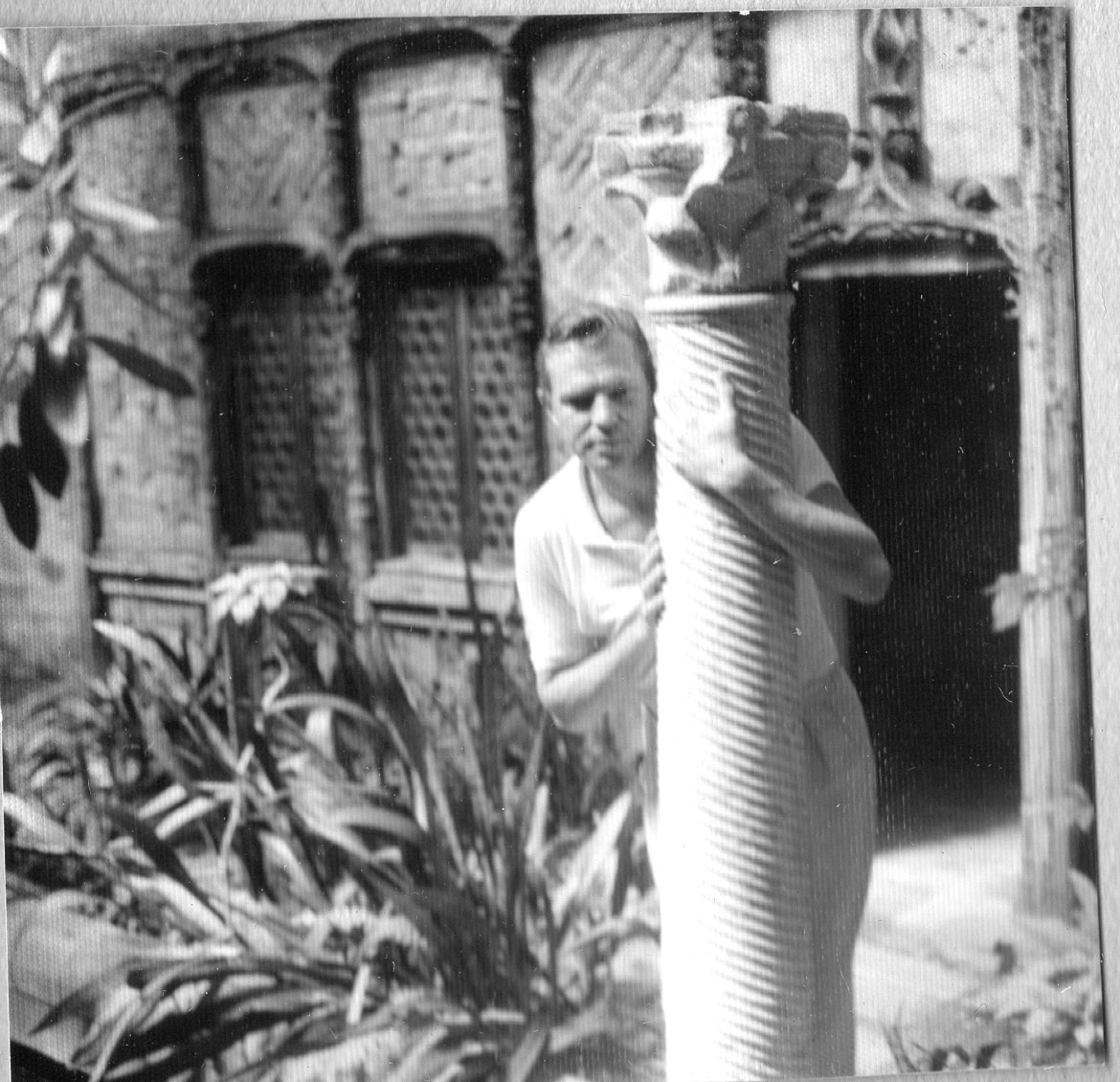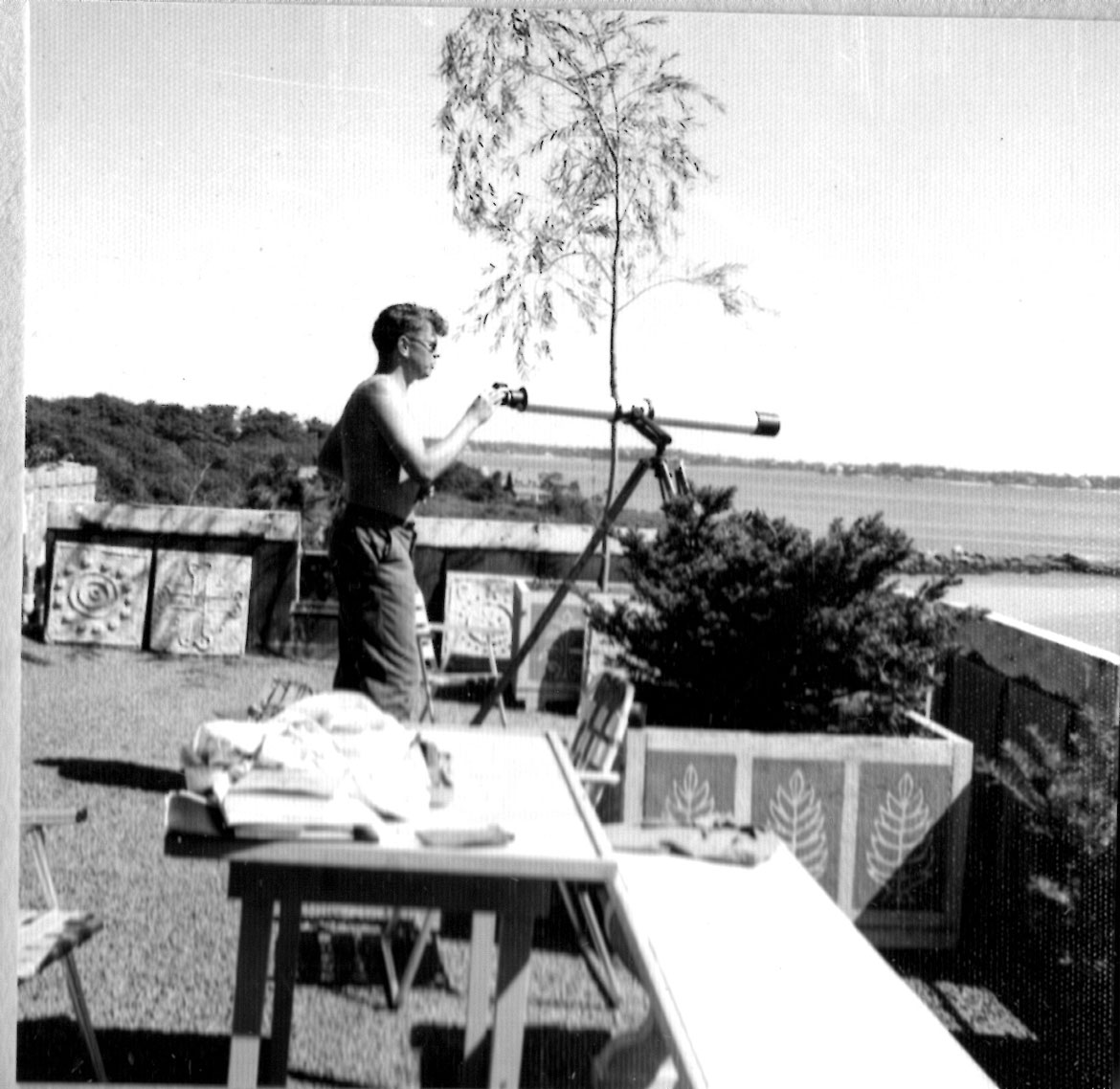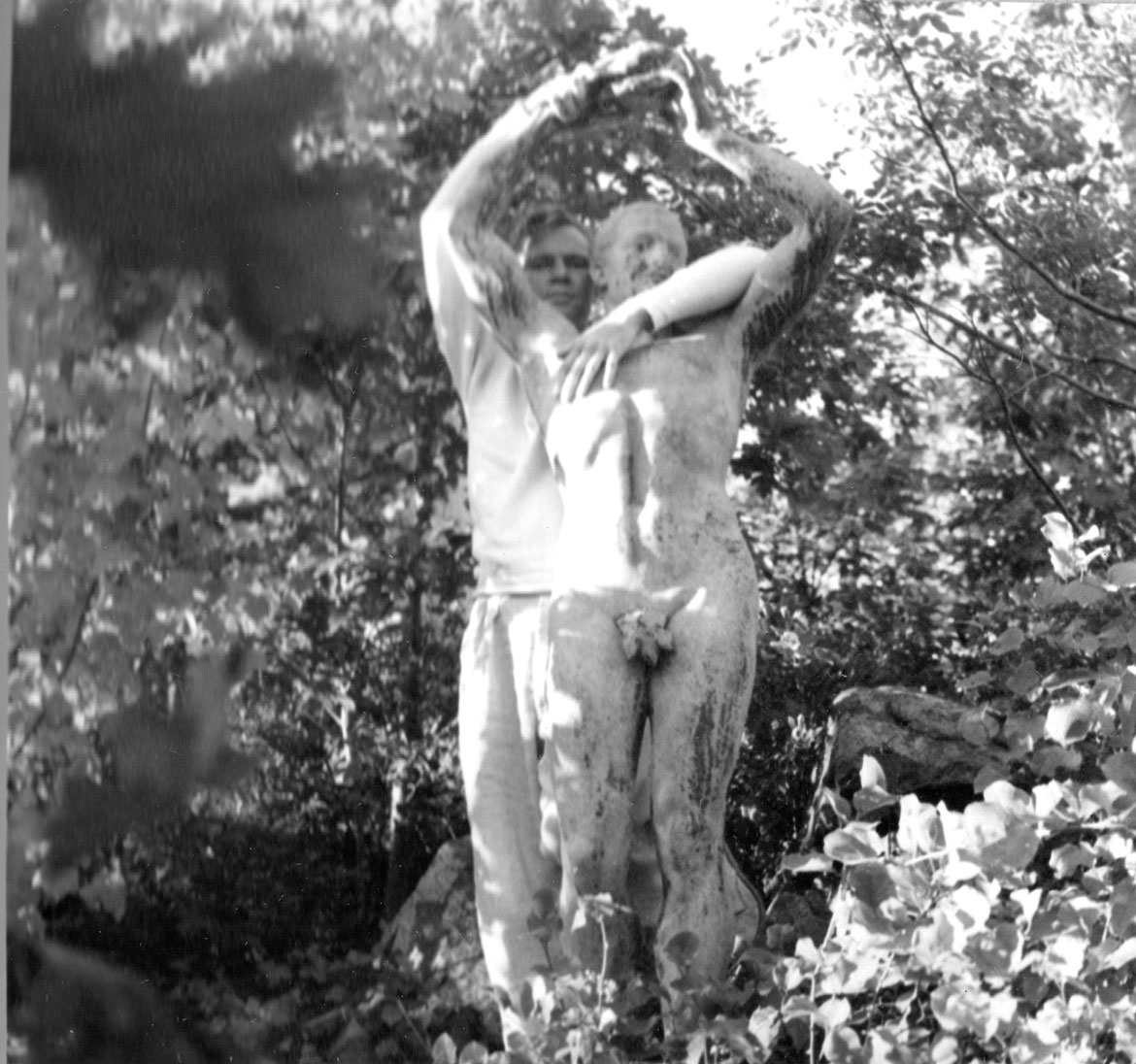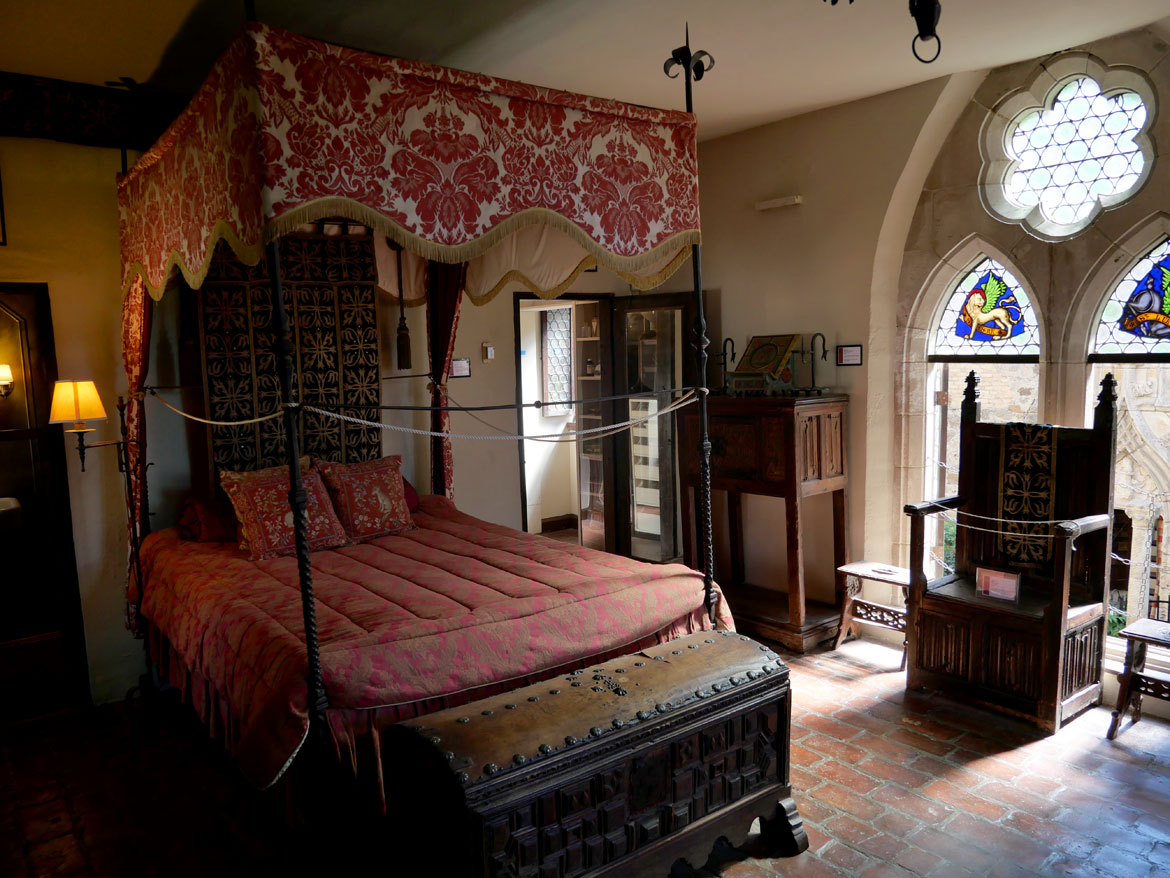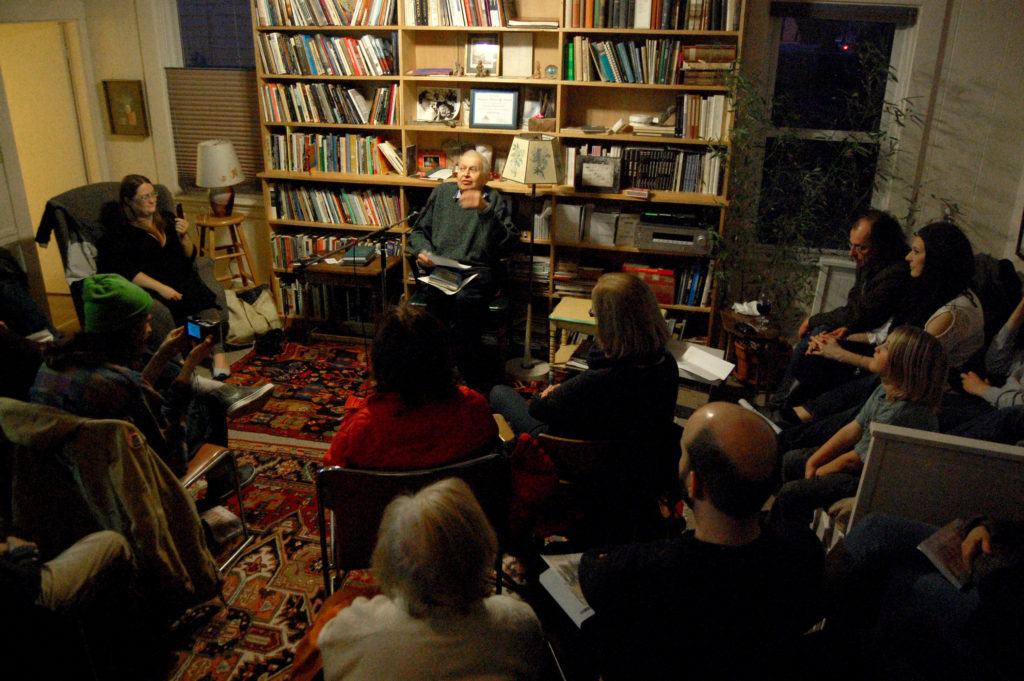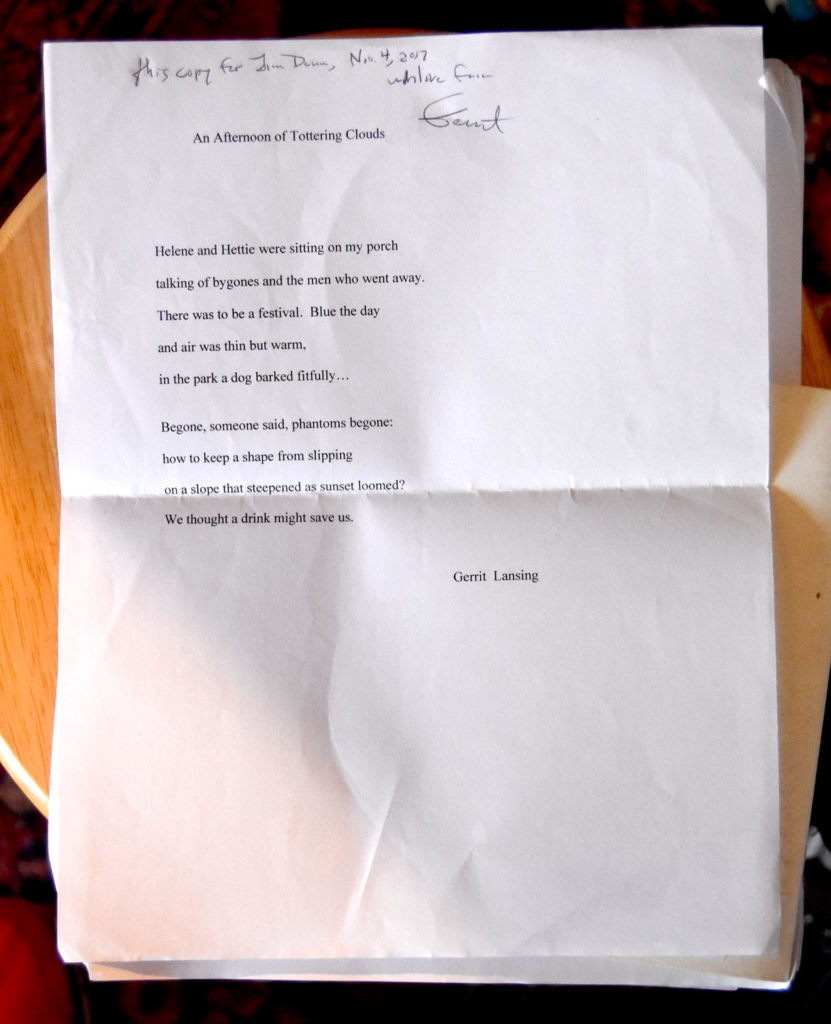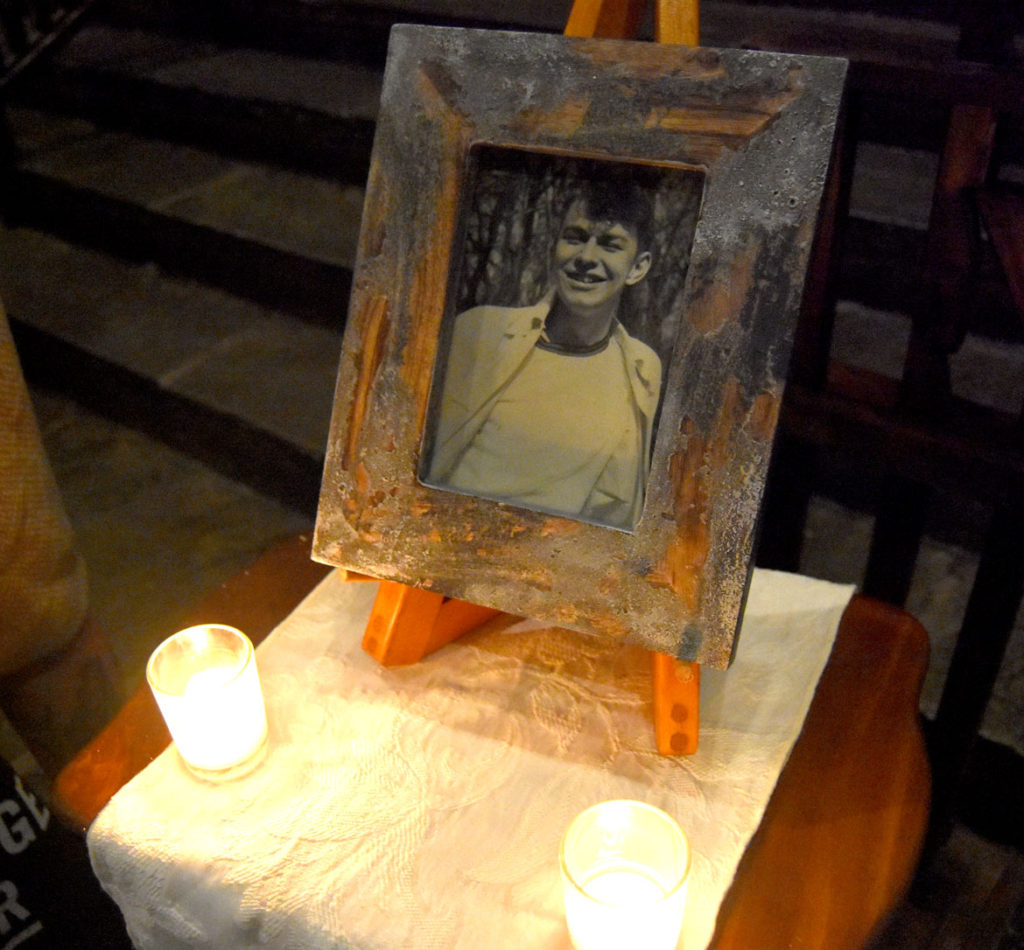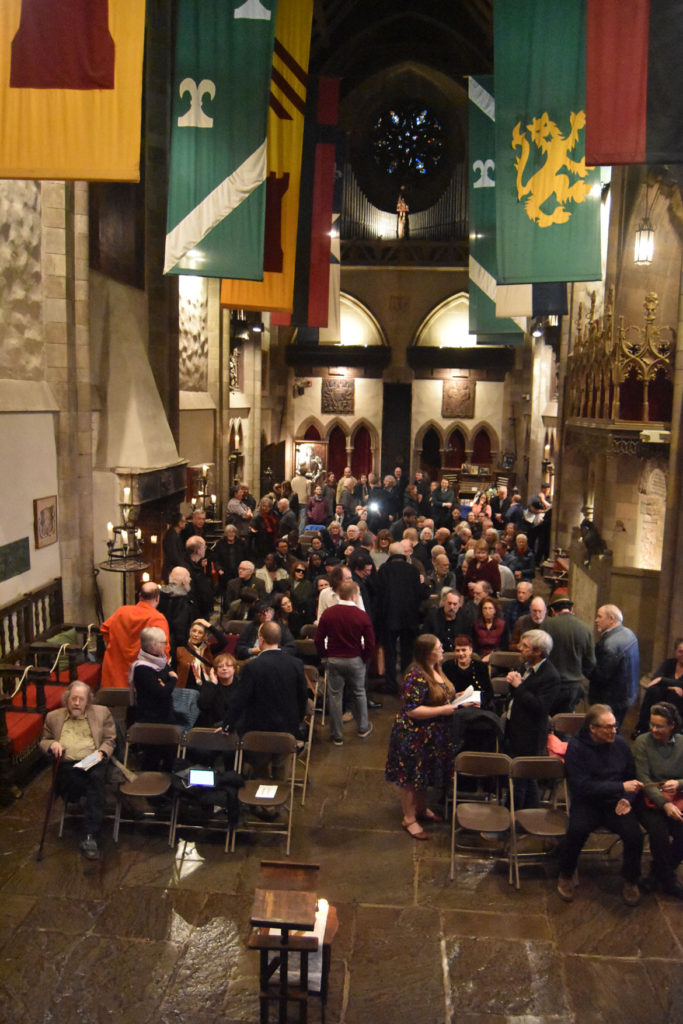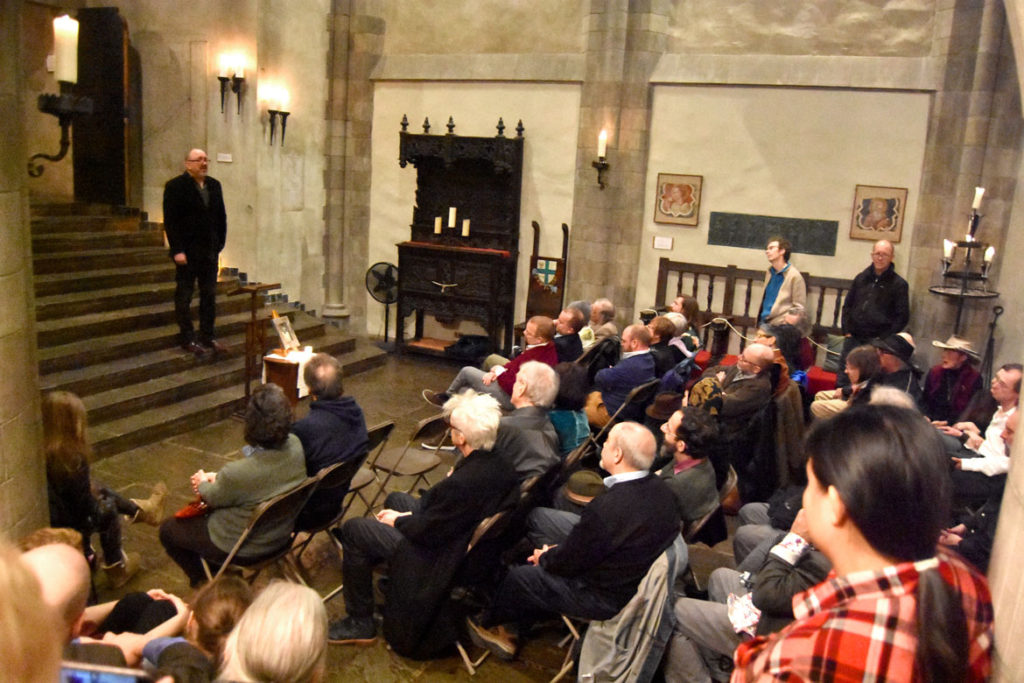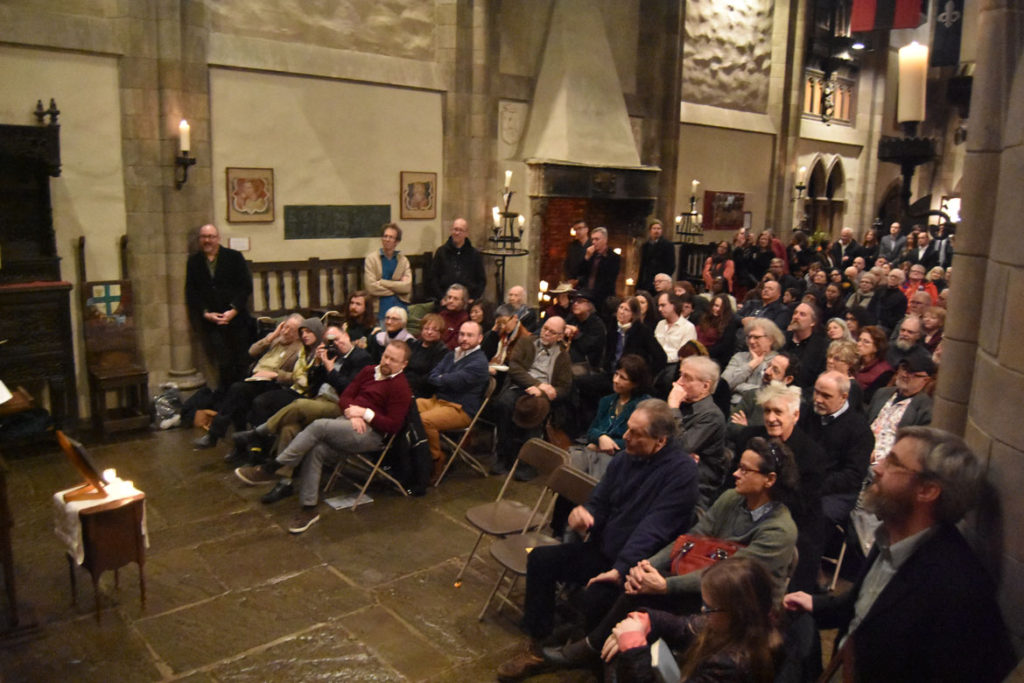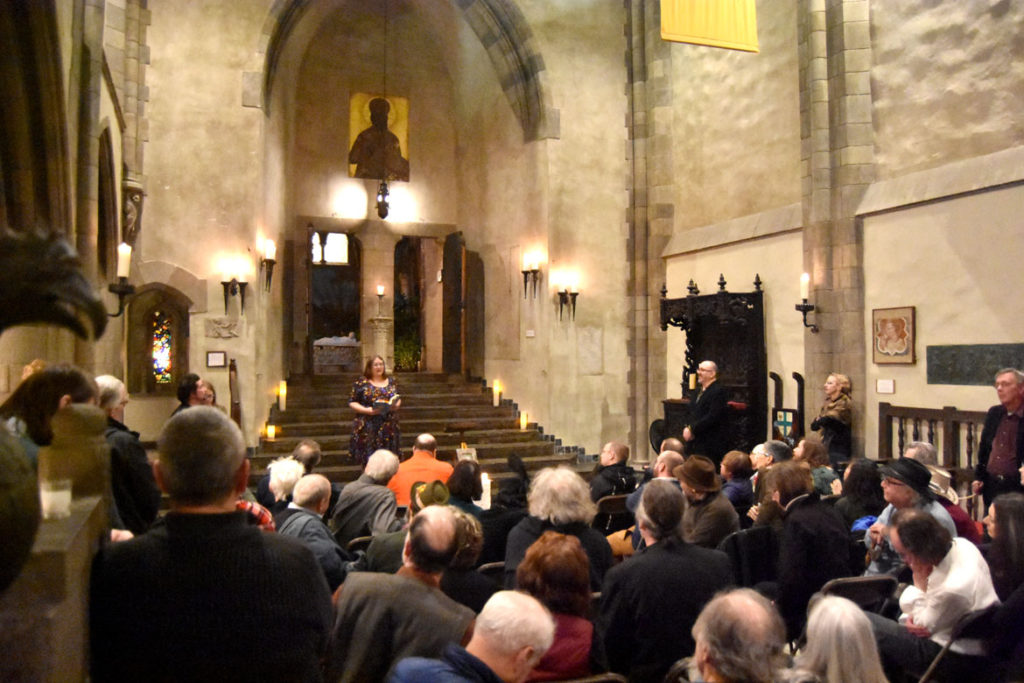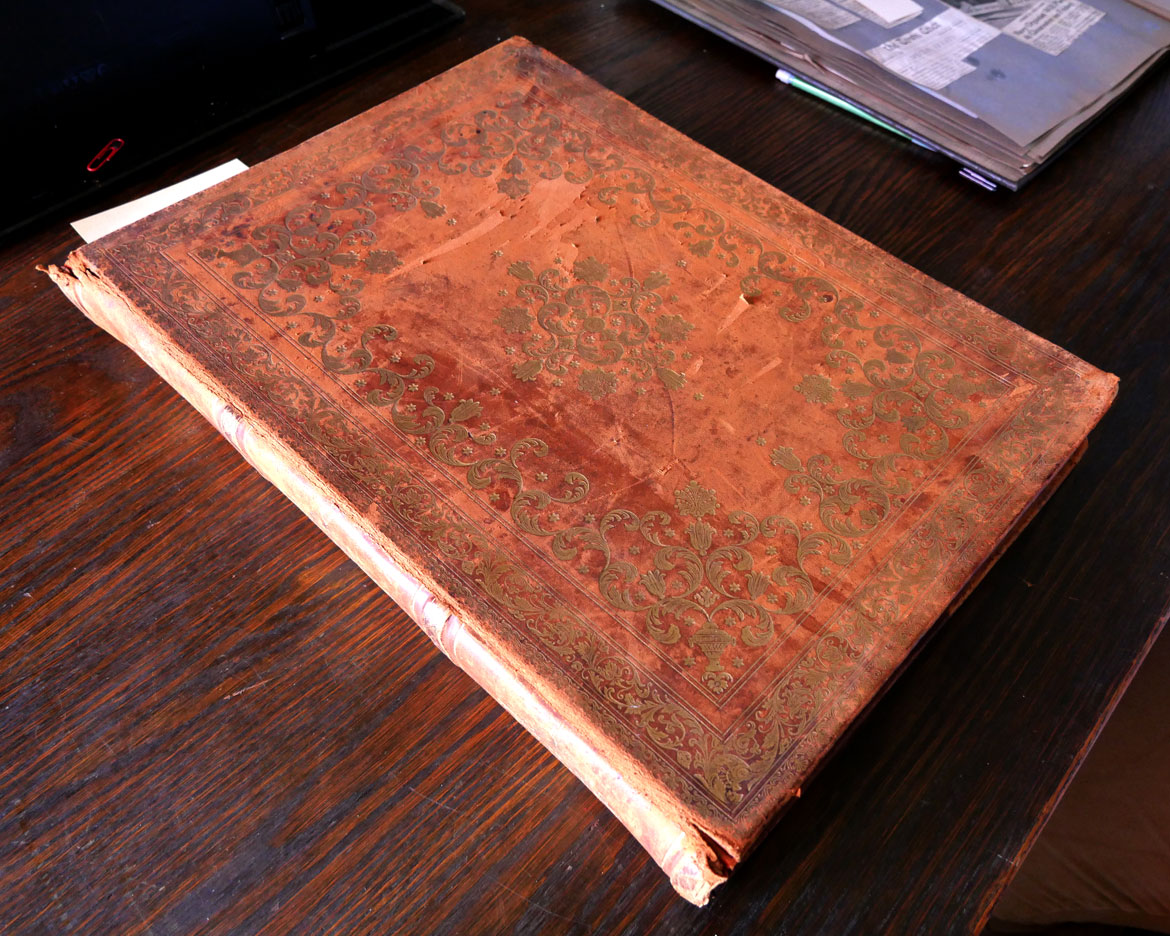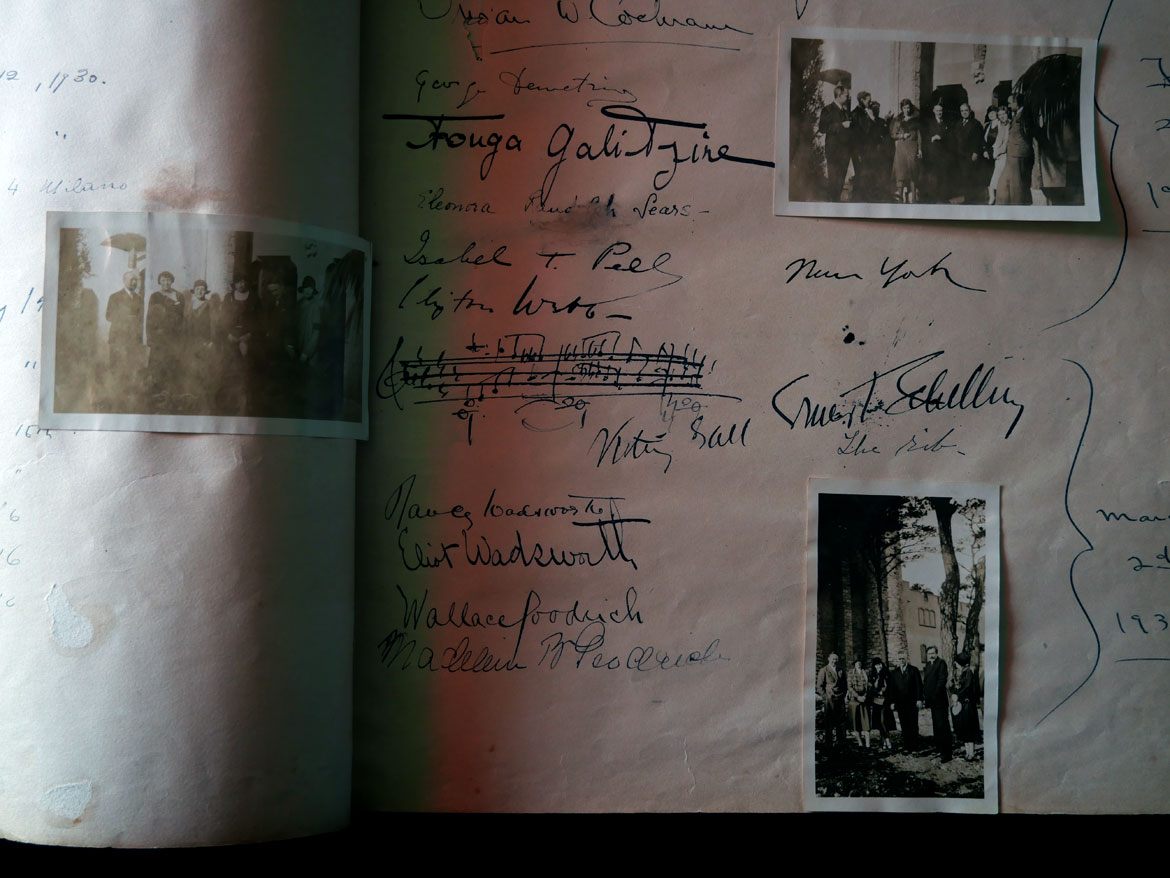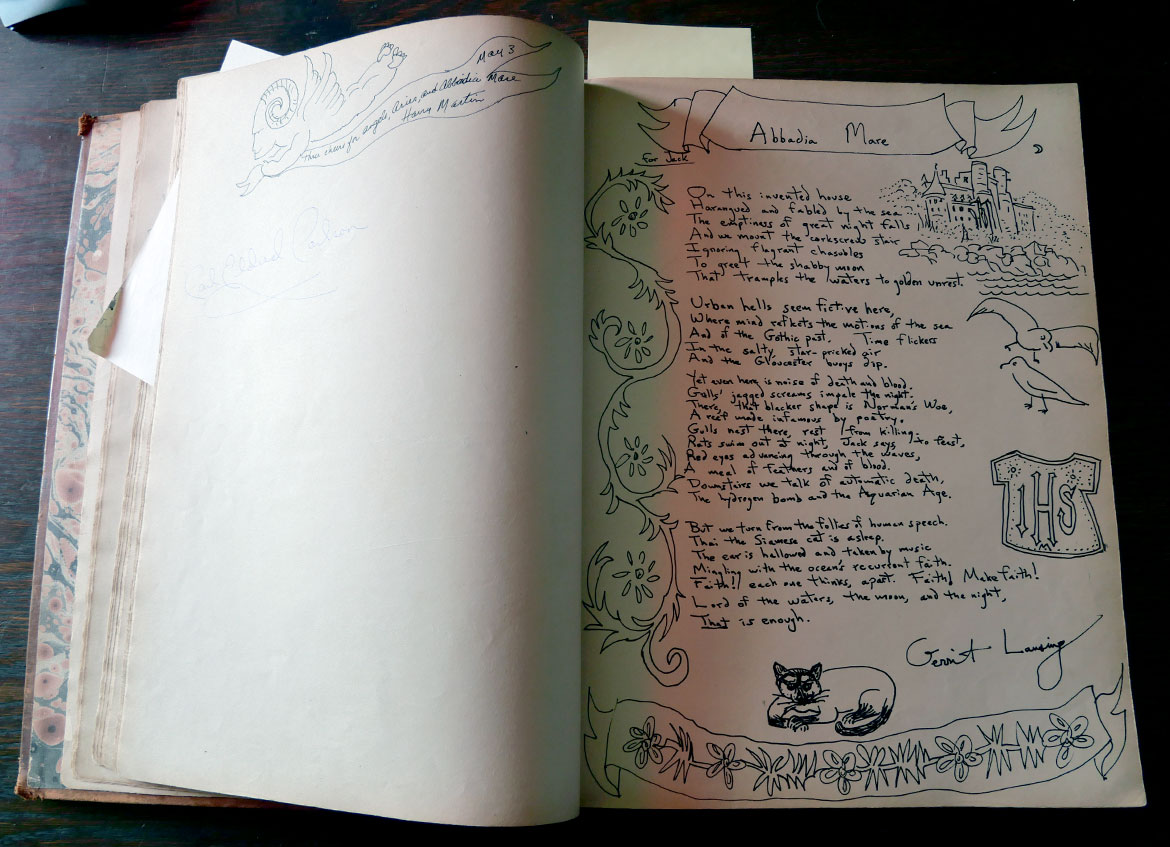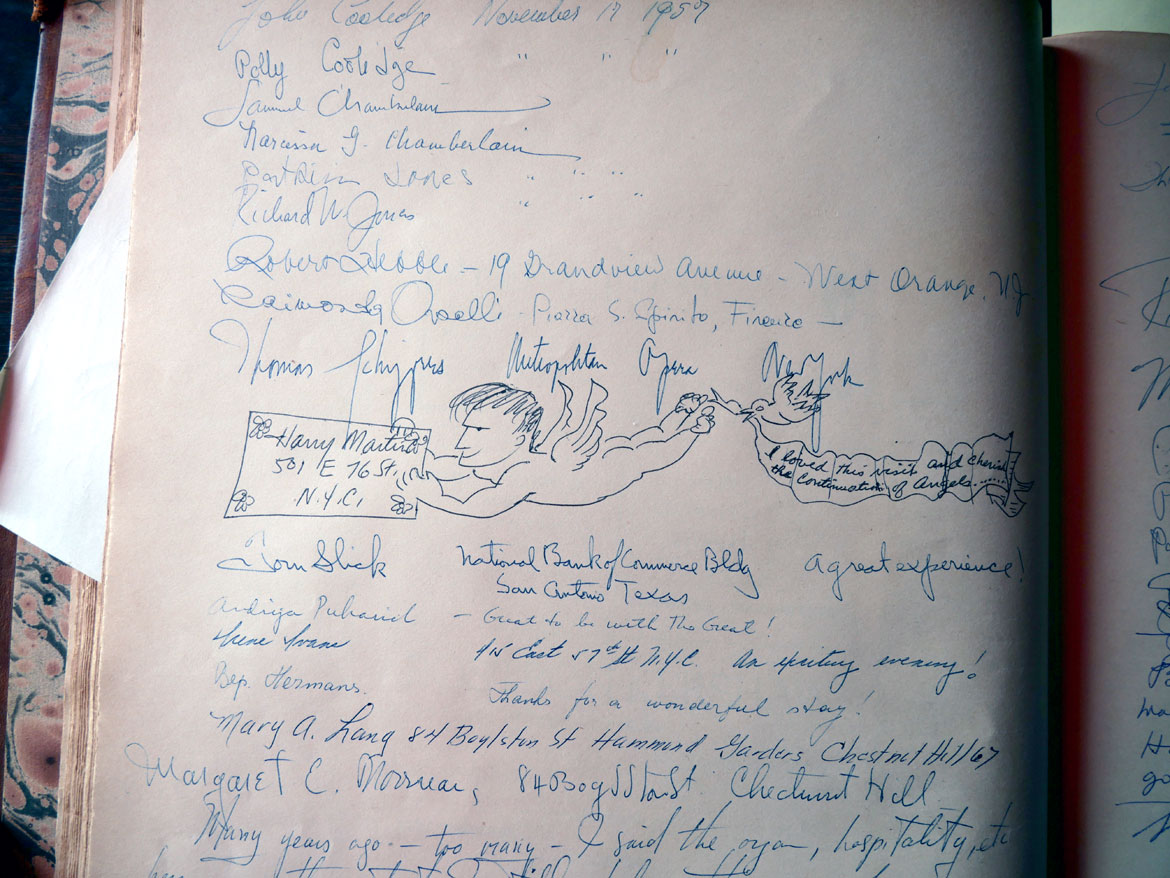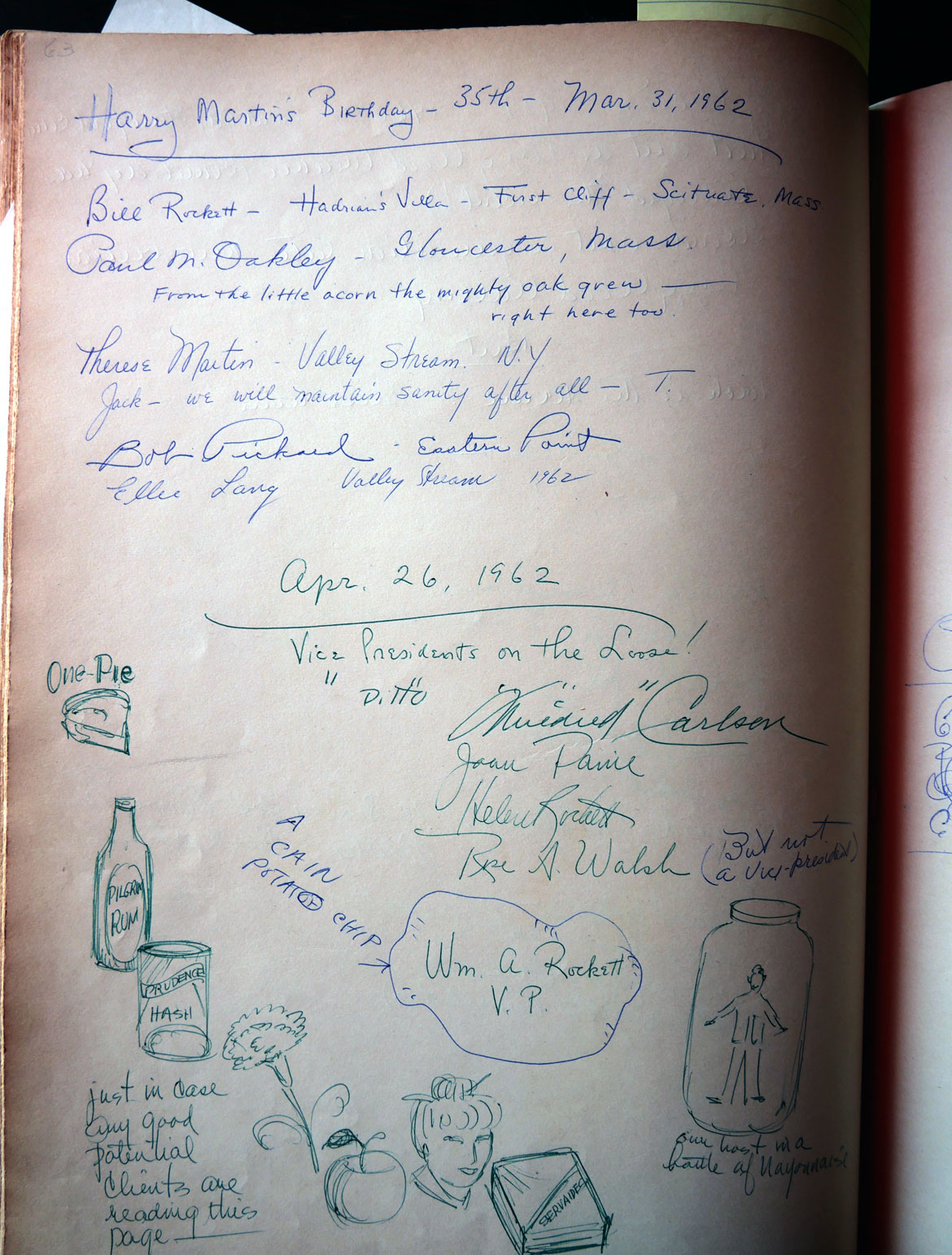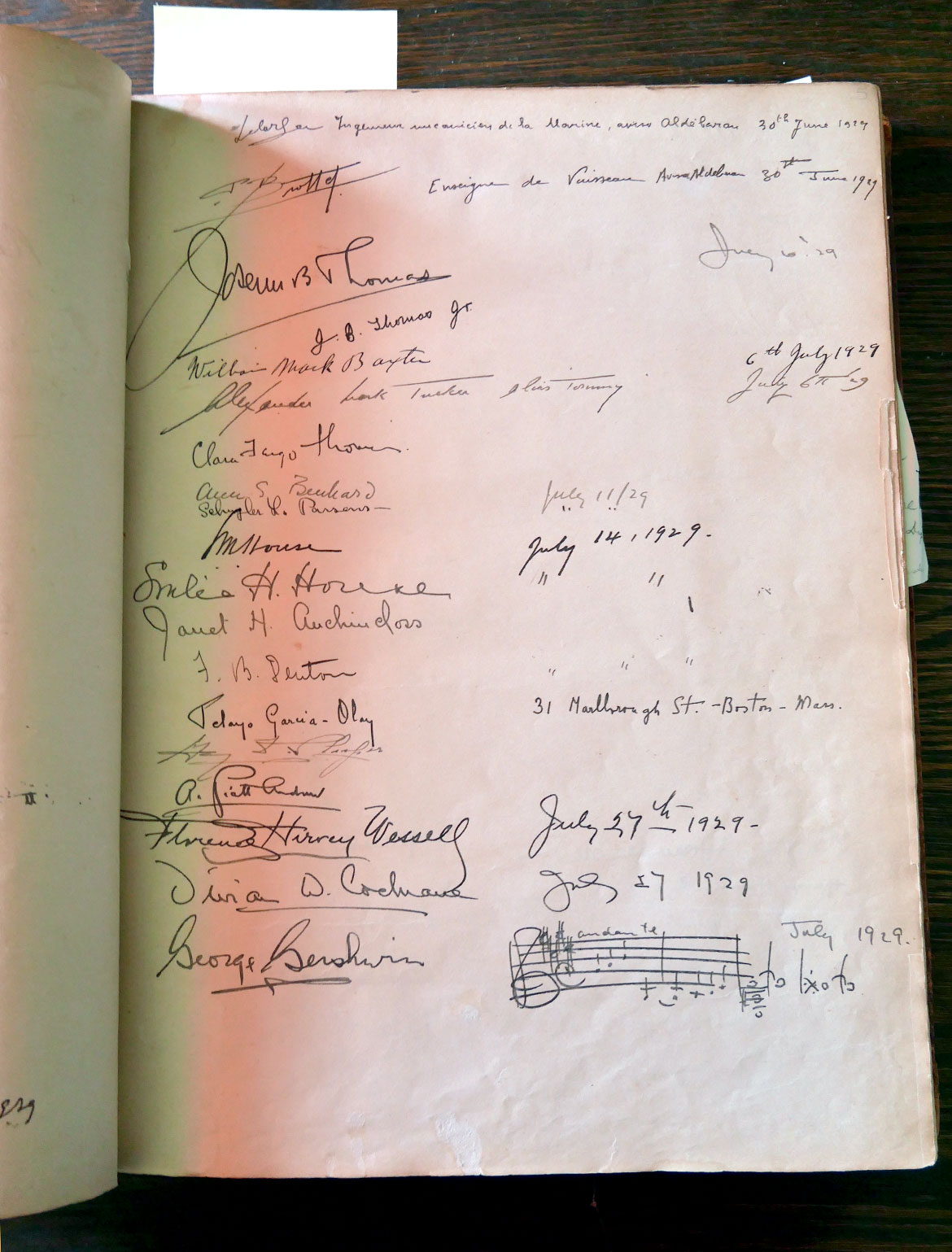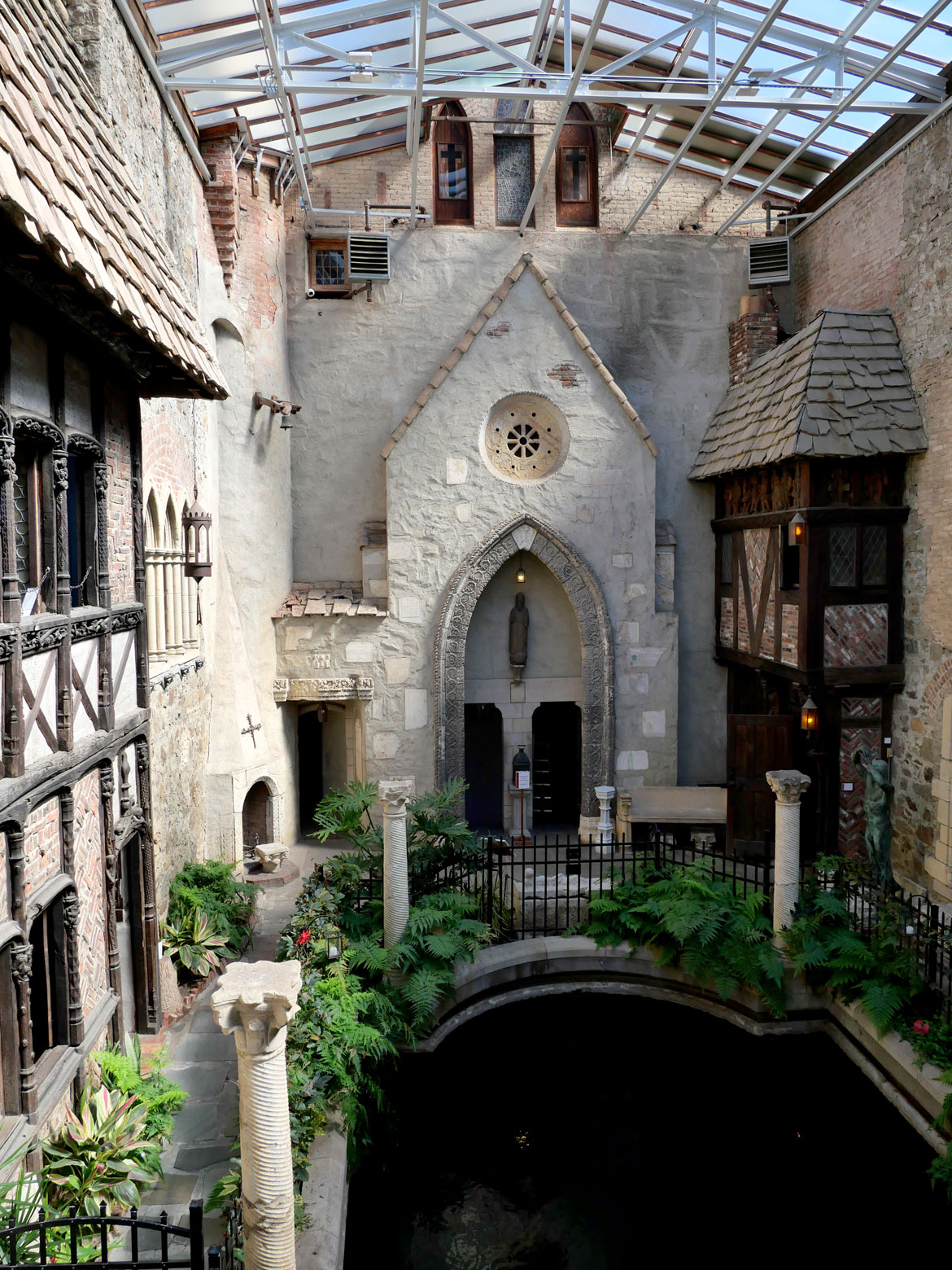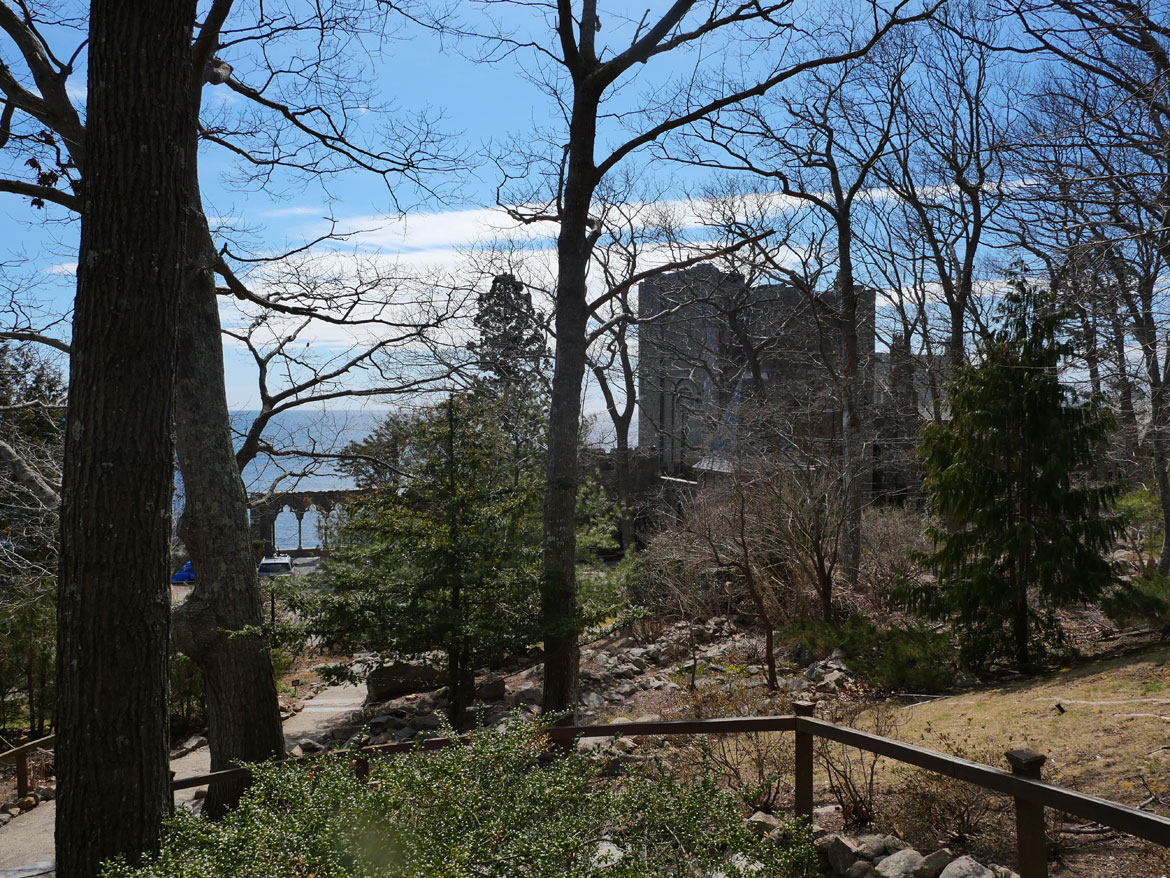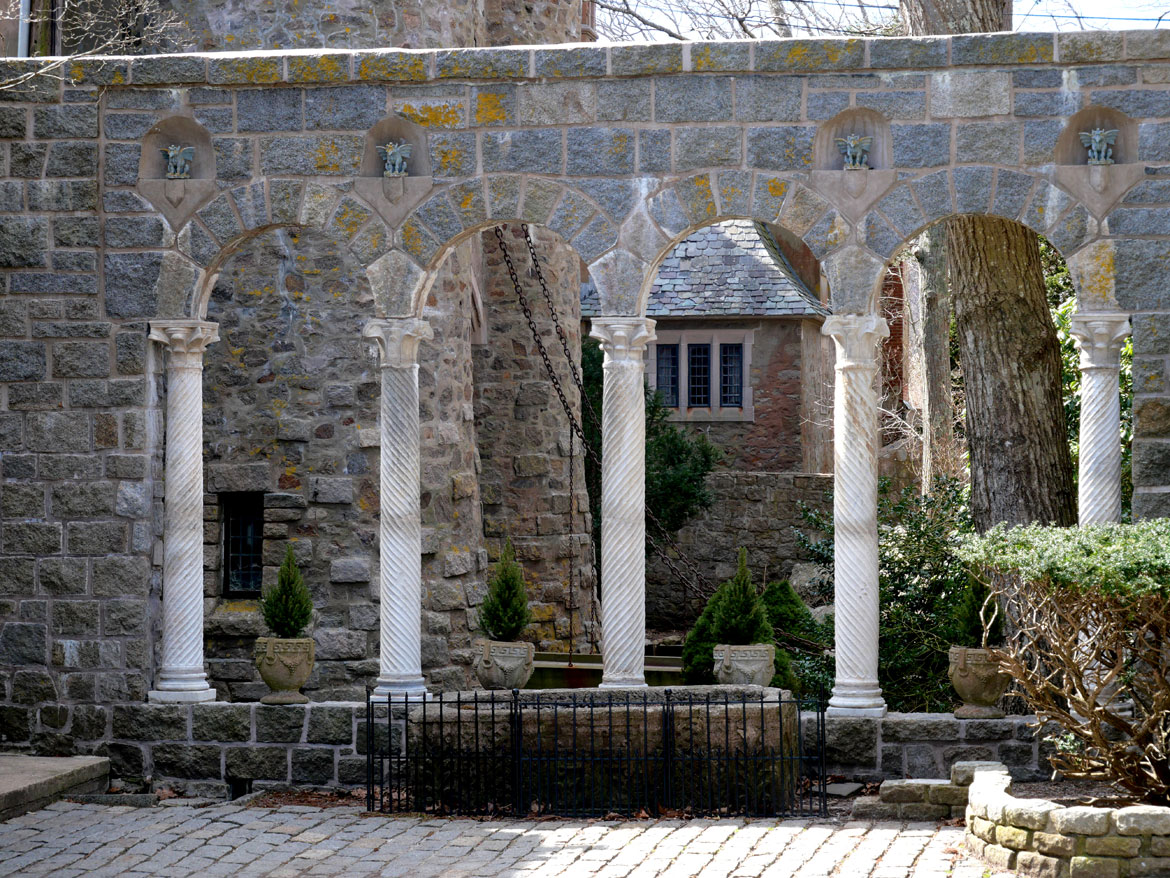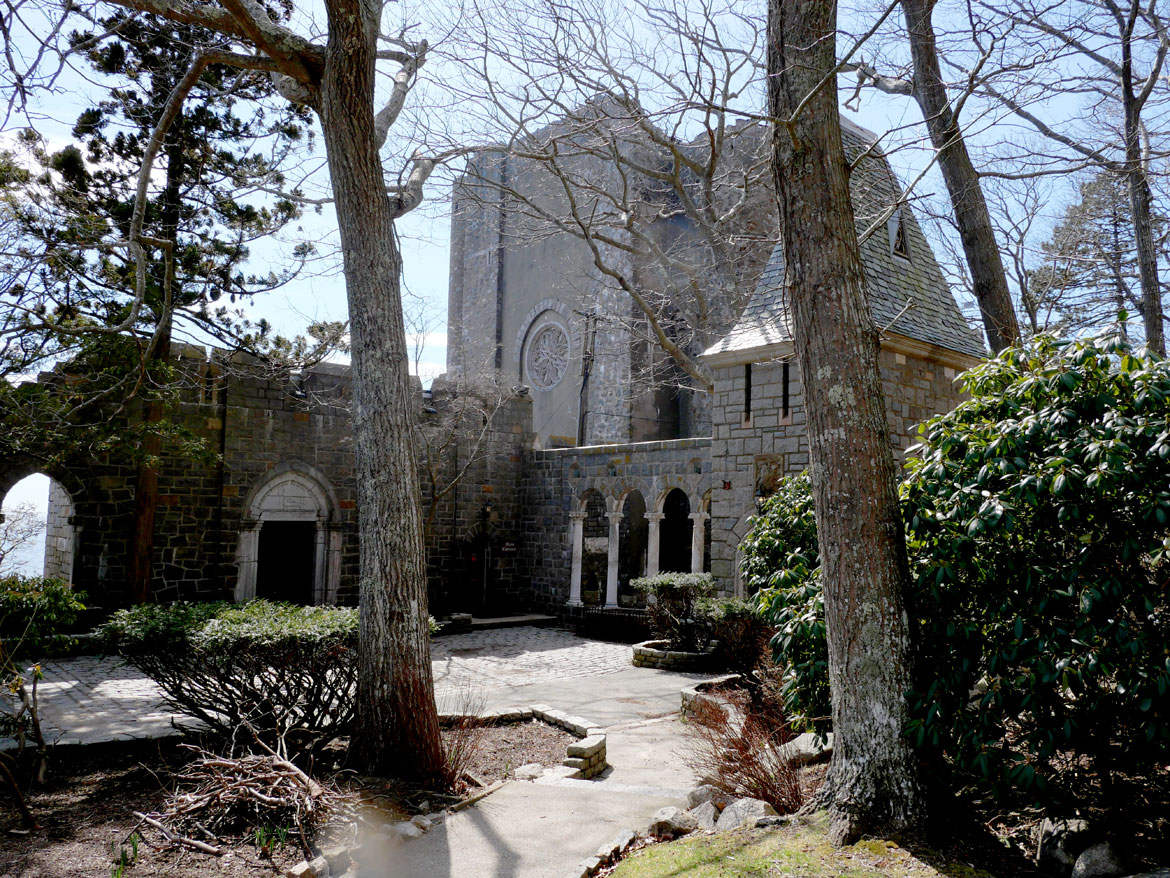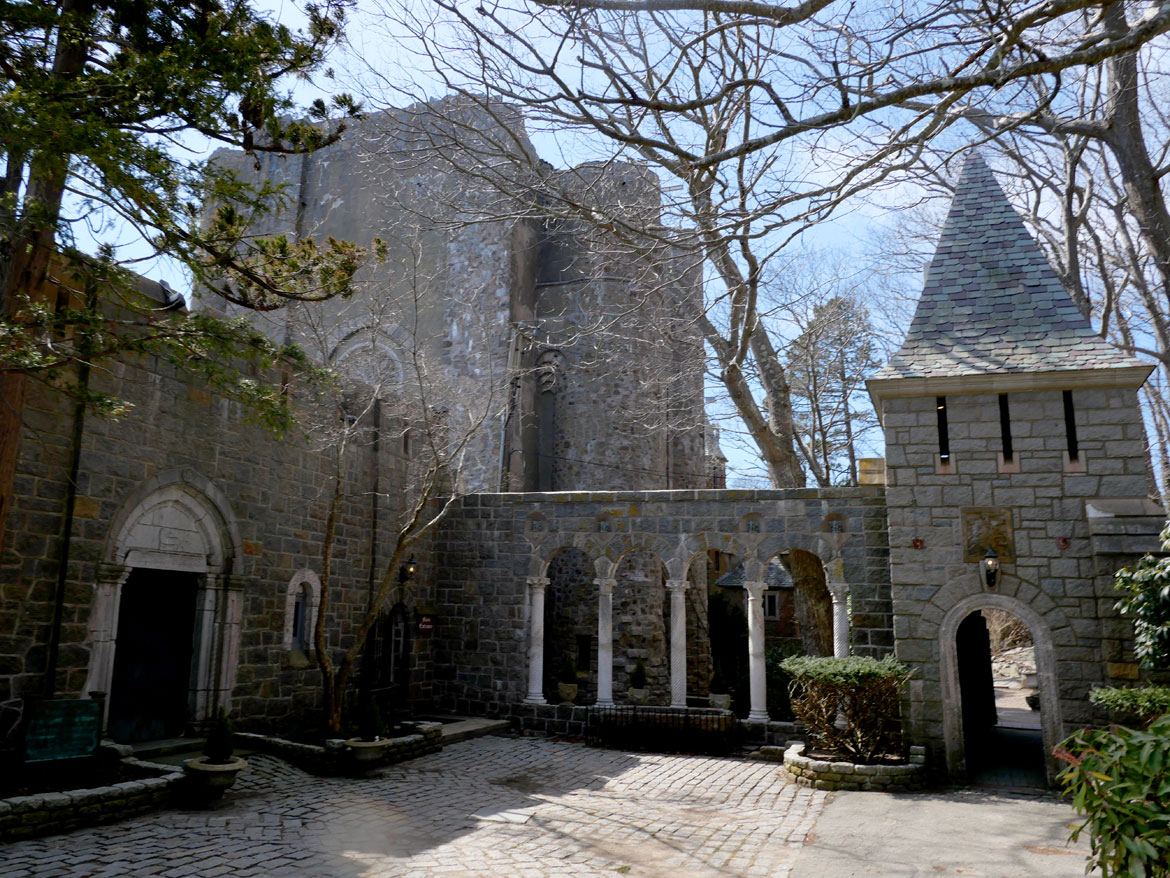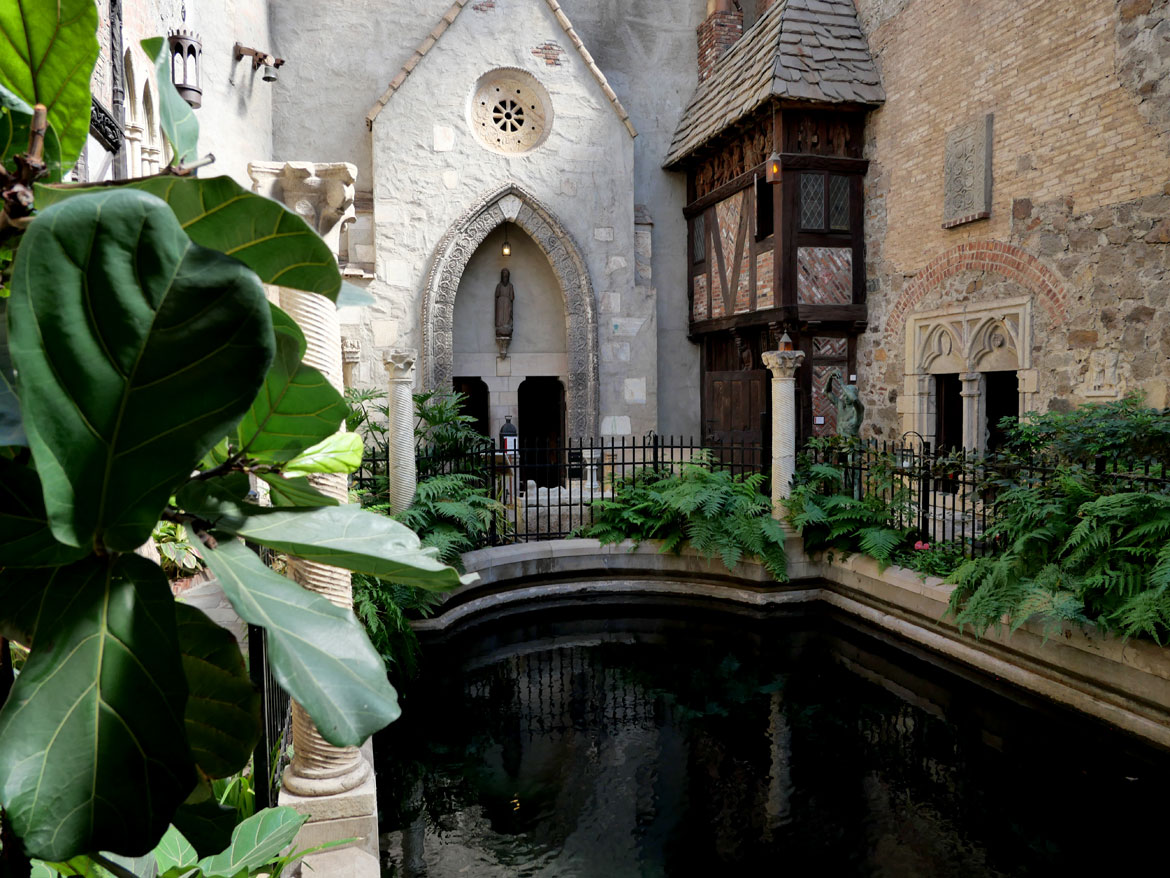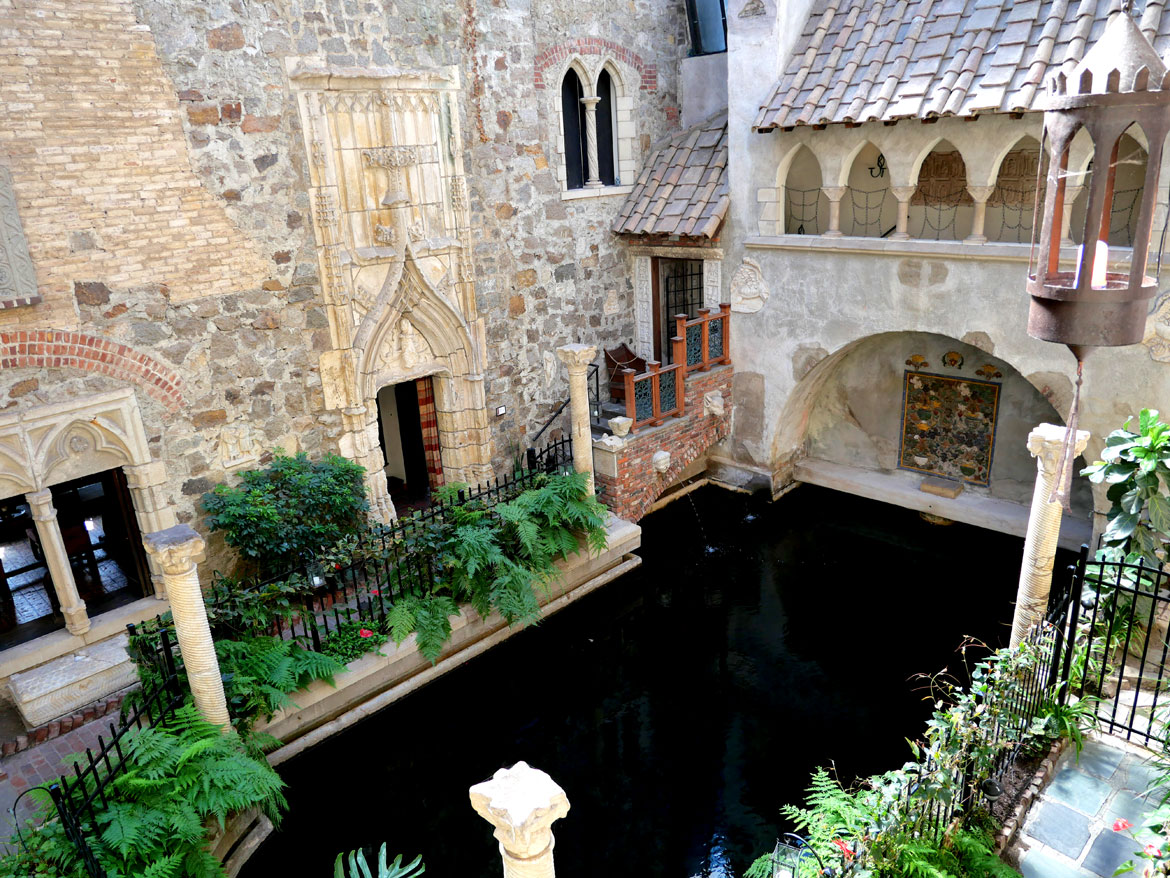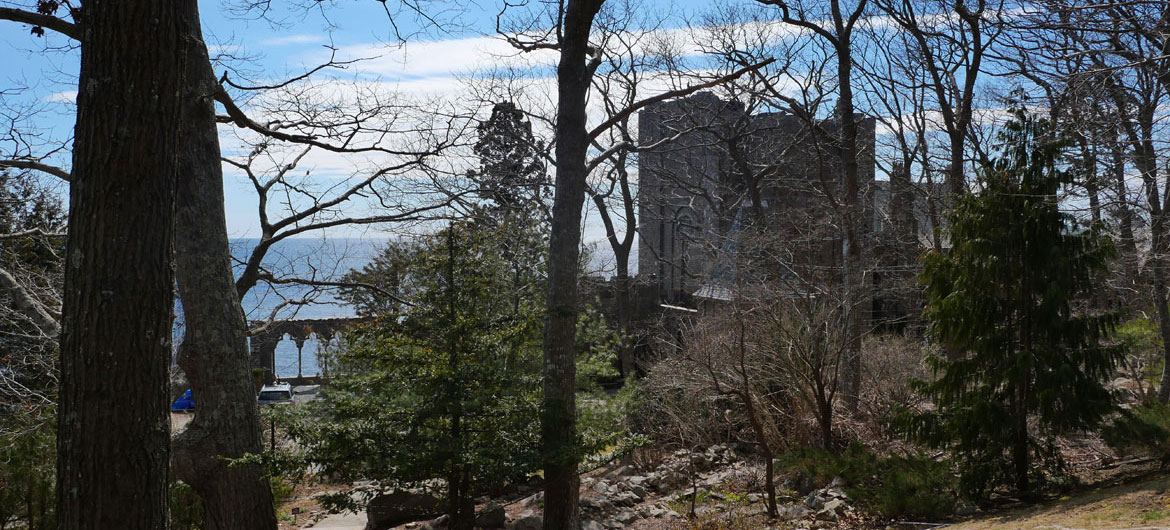Late last year, archivists made a dramatic discovery when paging through an old guest book at the Hammond Castle Museum in Gloucester, Massachusetts.
Long thought lost, the guest book—full of bold-faced names who visited inventor John “Jack” Hays Hammond, Jr.—was rediscovered as part of recent archival research. And tucked among the pages was a previously unknown drawing, signed by the celebrated painter Ellsworth Kelly, and dated March 27, 1960.
Surprisingly, the drawing was not one of Kelly’s signature minimalist abstractions, but a sketch of the mystic poet Gerrit Lansing in the pool inside Hammond’s Castle mansion. Kelly wrote in the bottom right corner: “Gerrit swims.”
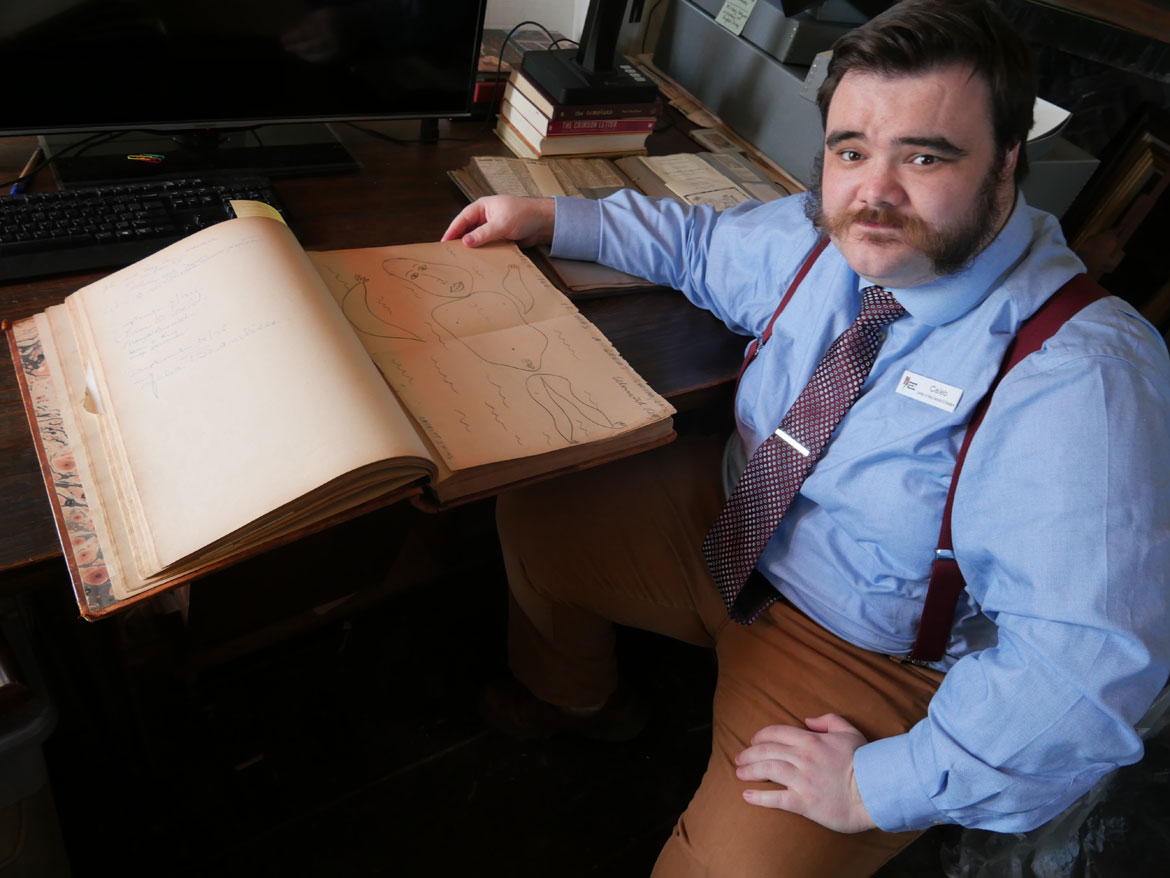
“It was folded up in this book,” Caleb McMurphy, the museum’s director of visitor services and education, tells me a few months later. He was kindly taking me upstairs to Hammond’s old octagonal bedroom, looking out onto Gloucester Harbor. There he showed me the guest book. It’s maybe 15 inches tall, with a leather cover decorated with a lacy flower pattern, and marbleized end papers. McMurphy flipped through the massive tome until he came to the drawing. He unfolded the paper, ragged at the top and bottom, to show it to me—and it felt like a time machine.
Lansing, who died on Feb. 11, 2018, just days before his 90th birthday, was a friend of mine. He was a wise and thoughtful and deeply curious and deeply learned and impish man. He’d sometimes talk about living upstairs at the Castle decades earlier and coyly mention naked pool parties there. Suddenly it wasn’t a vague memory—but my old friend naked and beautiful a month after he’d turned 32.
Kelly drew it in a late Picasso surreal cartoon style. It feels like a quick observation. Lansing is seen from above, floating on his back, a wan smile across his lips. His arms and head and torso and legs become separate shapes, islands. Kelly wrote across the top: “It was a great swim, Jack.”
In this intimate sketch was a glimpse of a network of friendships and creative alliances and romances. It was a window into a time when Hammond’s imitation fortress became a gay haven—one of the underground crossroads of mid 20th century American queer culture.
This June, McMurphy tells me, “for the first time ever in its history, Hammond Castle is celebrating Pride Month.” Events include the exhibition “Maximus to Aquarius: Gerrit Lansing and Set Magazine” from June 7 to 13, as part of a series of “Pride-focused mini-exhibits” throughout the month, the museum’s website explains, to “celebrate the life and accomplishments of a different set of significant queer figures who either visited the museum or were associated with its founder John Hays Hammond Jr.”
In connection with the exhibition, on Sunday, June 9, from 6:30 to 8 p.m., the museum will host “Abbadia Mare: A Night of Poetry & Pride”: “readings by community members from works by Charles Olson, John Wieners, Robert Duncan, Gerrit Lansing, Daisy Alden, and many others, including, for the first time, newly unearthed poems by John Hays Hammond Jr. himself. Along the way, learn about these figures’ ongoing relationships—their friendships, rivalries, and romances, with one another—and their personal significance within the broader tapestry of queer history. The evening will culminate in a reading of a unique illuminated version of ‘Abbadia Mare,’ a poem written by Gerrit Lansing in the museum’s guest book in 1959 about the building and personally dedicated to Hammond.”
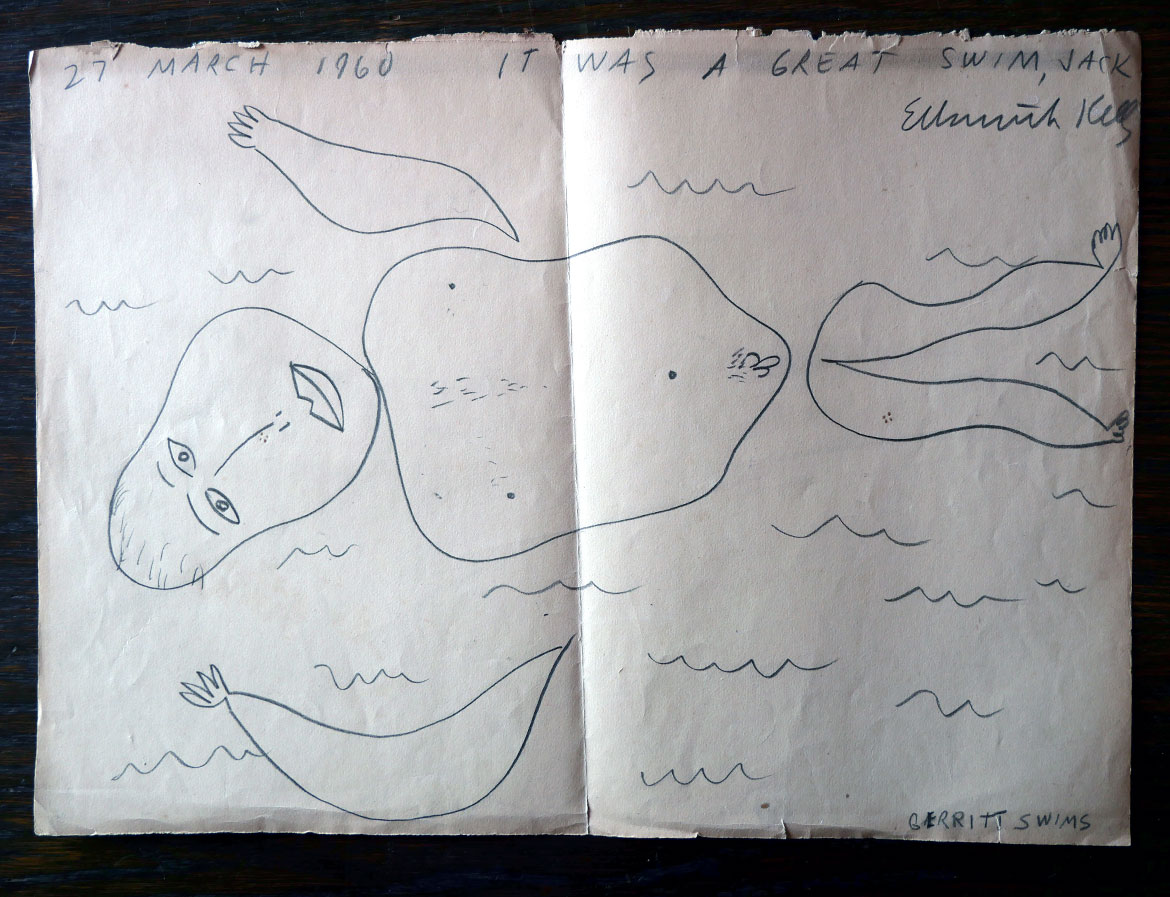
‘Mercurial,’ ‘Misanthropic’
How Lansing and Kelly ended up at Hammond’s Castle goes back to the painter Harry Martin. A timely snapshot of the group can be found in Patrick Balfour aka Lord Kinross’s 1959 travel memoir “The Innocents at Home.”
During a visit to Manhattan, the British author took a taxi and struck up a quick friendship with his driver, who turned out to be Martin. “As a painter, he was emerging from an abstract phase,” Kinross wrote, “but no new style had yet taken its place, and these were haphazard sketches of people in the parks and animals in the zoo.”
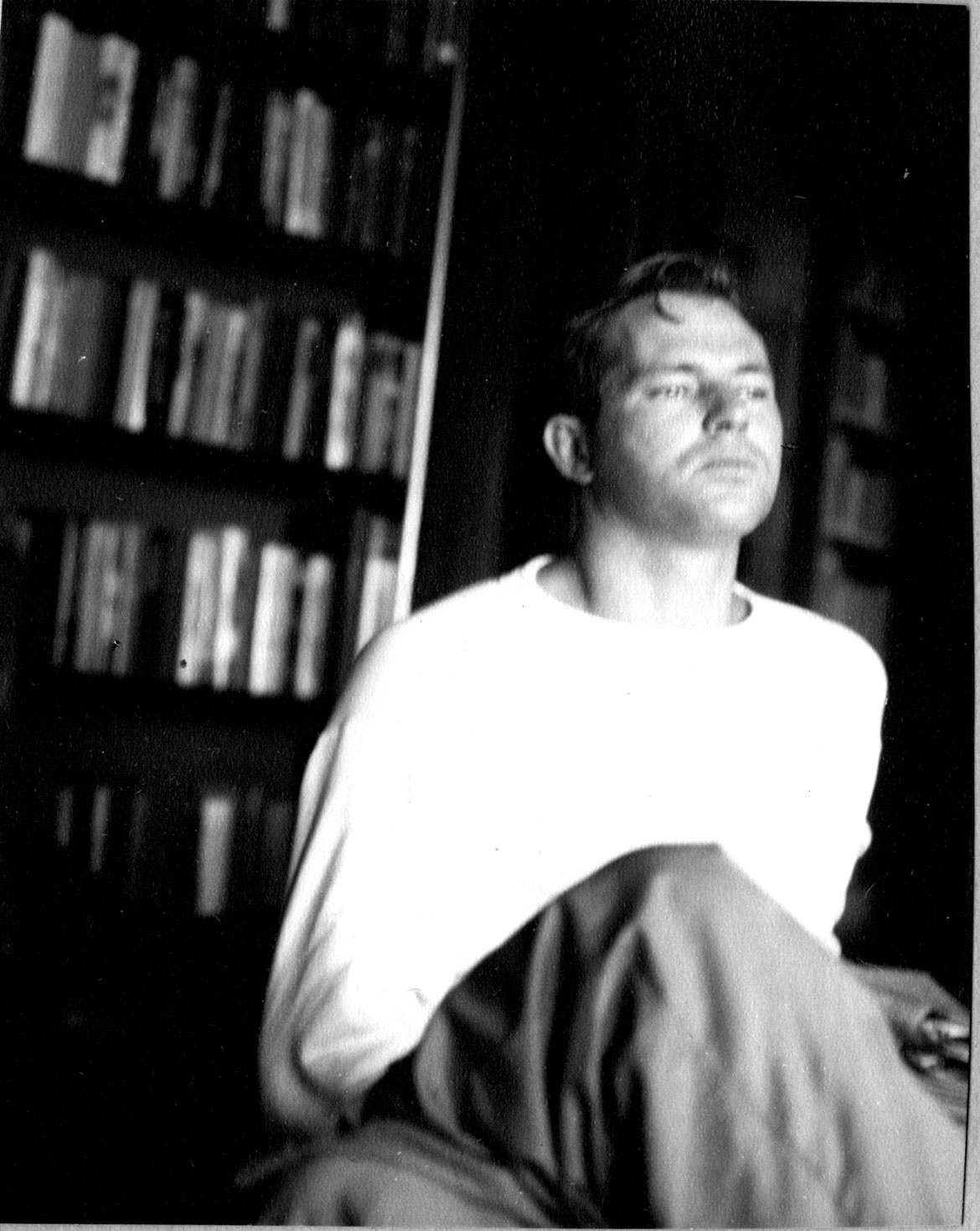
Kinross ended up staying with Martin and joining Martin’s New York circle of friends—which included Gerrit Lansing, “at heart a serious scholar,” Kinross wrote, who was “mercurial and versatile, with an alert pug-face and a quick paradoxical mind, who counterbalanced a safe University Press job with a pursuit of the esoteric and a private life of exuberant and restless disorder.”
Lansing graduated from Harvard in 1949, and moved to New York with college friends—poets Frank O’Hara and John Ashbery, and artist Edward Gorey, with whom Lansing attended the ballet. Lansing found work at Columbia University Press. In the rare book room of the New York Public Library and at bebop concerts at Birdland, Lansing became friends with the mystical artist and anthropologist Harry Smith.
Martin’s friends also included Ruth Landshoff-Yorck, a German writer, translator and actress who’d performed in the classic 1922 film “Nosferatu.” David Rich, a friend and archivist for Lansing, says, “She was a woman, but had a male identity and dressed as a man.”
Another friend of Martin’s was the artist Ellsworth Kelly. Kinross would sometimes lunch with Martin and the “sallow and withdrawn and misanthropic” Kelly at the Central Park Zoo or hang out on the roof of Kelly’s “studio at the top of an old dilapidated building downtown, between Wall Street and the River.”
Kelly later became famous for his flat, colorfield abstractions. New York’s Museum of Modern Art owns more than 300 of his artworks. “One of America’s great 20th-century abstract artists,” The New York Times said when he died in 2015 at age 92, “who in the years after World War II shaped a distinctive style of American painting by combining the solid shapes and brilliant colors of European abstraction with forms distilled from everyday life.”
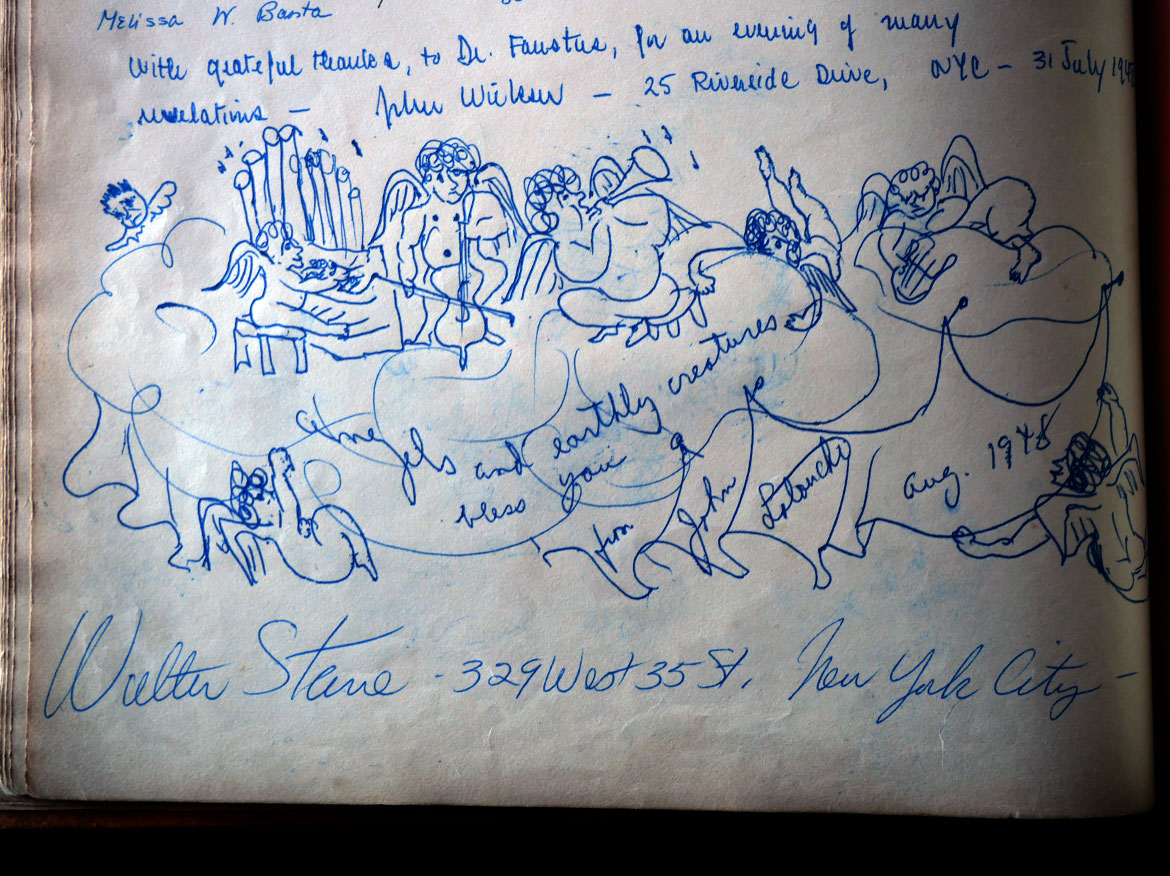
“One figure stood out as a dominant influence among this group of friends. He was John Latouche,” Kinross wrote. Latouche was the Broadway theater librettist who composed lyrics for the 1956 opera “The Ballad of Baby Doe” and collaborated with Duke Ellington on the 1946 musical “Beggar’s Holiday” and collaborated with Leonard Bernstein and Lillian Hellman on the 1956 operetta “Candide” (until Bernstein fired him). Latouche began an affair with Martin in 1950, that lasted perhaps a couple years, before Latouche took up with Kenward Elmslie, a poet, heir to the Pulitzer fortune, and Lansing’s childhood friend. “John was dominating in his friendships and, moreover, lived at a turbulent pitch such as few human beings can sustain for along. He would work and talk all day, and drink and talk all night, carrying along with him, irresistibly, his small court of adherents.”
Kinross describes the friends’ primary pastimes as heavy drinking and philosophical discussions about the meaning of life. In his 2017 biography “The Ballad of John Latouche: An American Lyricist’s Life and Work,” Howard Pollack reproduces a carnival photo taken at Coney Island in the early 1950s of Latouche, Martin, Lansing and Elmslie playing “gangsters in a getaway car.”
“There were perhaps a dozen of them, all relatively poor and outwardly unconcerned about money, living for the most part in cold-water flats; perplexed by personal problems, psychological and otherwise, but creating an atmosphere around them in which I felt at once at home,” Kinross wrote. “They were people with a respect for civilized values, in the arts and in personal relations; with an approach to life which was zestful and essentially human, but with an honesty of mind which made them uneasily critical of much of the life going on around them.”
‘Never Known A Time Like This’
Kinross set off to tour the United States. (His book is illustrated by Martin’s inked icons of landmarks from Kinsross’s American travels.) While visiting Los Angeles, Kinross received a letter from Martin saying he had been staying at Latouche’s home in Calais, Vermont. In the early morning hours of Aug. 7, 1956, Latouche woke Martin with “a terrific chest pain.” Martin wrote that, within an hour, the 41-year-old Latouche was dead. The medical examiner identified the cause as a heart attack.
“I have never known a time like this when I feel so numb and unable to communicate,” Martin wrote Kinross. “There are only four of us still here at the house: Ruth, Ken, Gerrit and myself.”
“This set up Harry Martin in a very difficult position. Despite the coroner saying John Latouche died of thrombosis [leading to a heart attack], his family suspected he murdered John Latouche,” McMurphy says.
Latouche’s family requested a formal inquiry. An autopsy confirmed a heart attack and “exonerated Martin, who nonetheless was left traumatized by the entire ordeal,” Pollack writes in “The Ballad of John Latouche.”
To get some distance from his troubles, Martin visited Kinross in England, before returning to New York and driving a cab again. In 1958, Latouche’s old friend Hammond, “who long had taken an interest in Martin, invited the painter to move to his castle in Gloucester, Massachusetts, where the two, according to Gerrit Lansing, discretely conducted an affair,” Pollock writes.

Martin first visited Hammond’s Castle with Latouche in the summer of 1950. Hammond was an inventor, mentored by Thomas Edison and Alexander Graham Bell, who went on to launch Hammond Radio Research at his parent’s seaside estate in Gloucester in 1911. He was awarded more than 400 patents, many for work for RCA. Sometimes called “The Father of Radio Control,” his devices, including a radio-controlled torpedo, are considered a key forerunner of today’s missile guidance systems. In the late 1920s, he erected his medieval-style stone castle near his parents’ home, naming it “Abbadia Mare,” Latin for “Abbey from the Sea.”
Rich recalls, “According to what Gerrit told me, Hammond said: Come live with me.”
“Hammond had relationships with both men and women throughout his life,” McMurphy says. “…Hammond calls him up and says: My wife is very ill. I’m getting older. You don’t have anything to do. You’re in these dire financial straights. Why don’t you come up here and you can be a caretaker for the building and you can live with me.”
“Harry Martin coming up here,” McMurphy says, “is what brings Gerrit Lansing up here and brings Kenward Elmslie up here.” Lansing wound up living in one of the bedrooms upstairs from the indoor courtyard that evokes a 15th century French village square—with a swimming pool at the center.
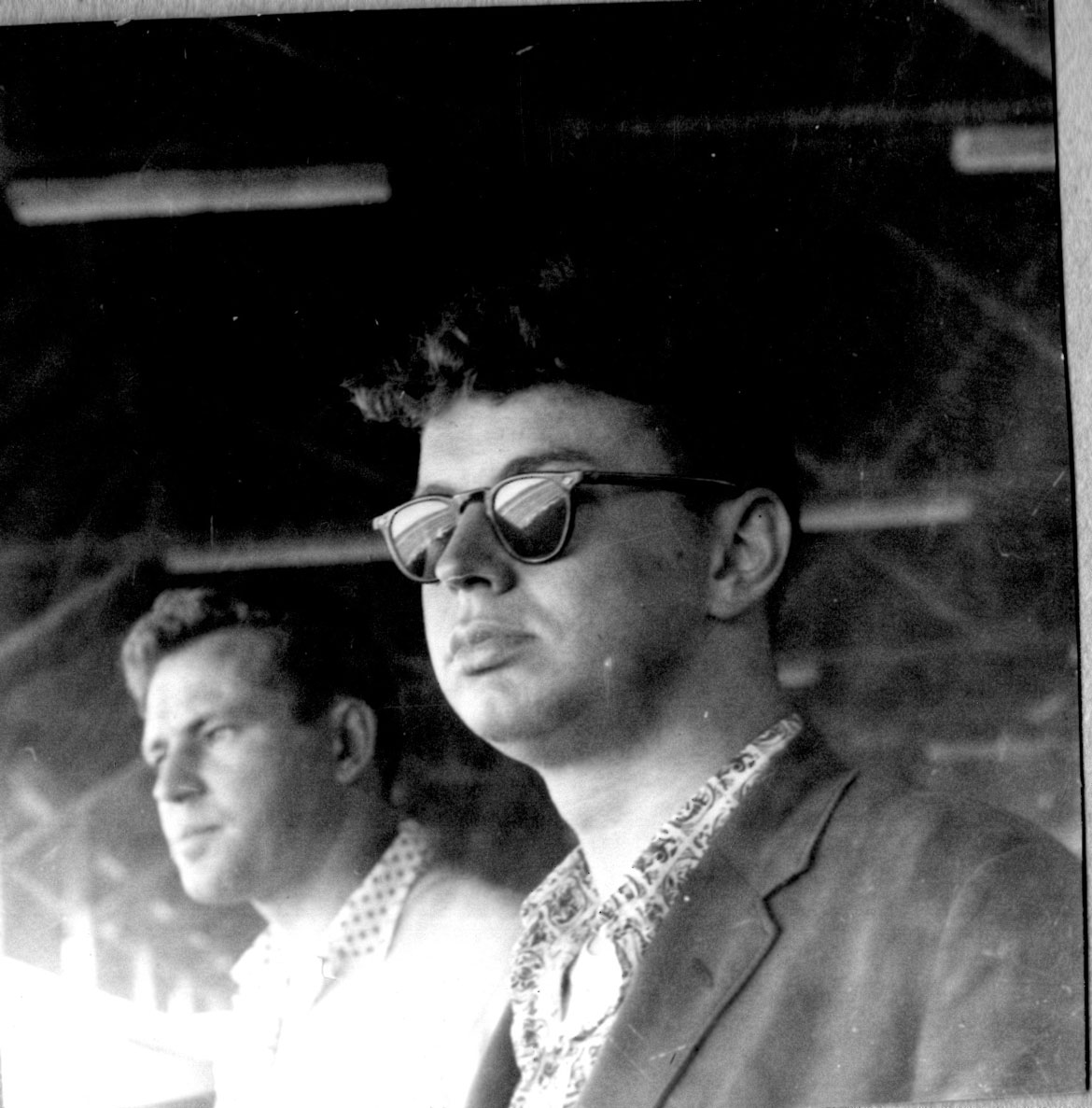
Famous Visitors
Hammond’s success and notoriety attracted many famous visitors. The first signatures in his guest book, dated November 1928, are Hammond’s parents. Composer George Gershwin visits in July 1929 and inscribes a line from his landmark 1924 jazz age tune “Rhapsody in Blue.” Other signatures include the Roman Catholic Cardinal of Boston, movie people, society people, mystics and occultists, Boston Symphony Orchestra conductor Serge Koussevitzky, Jackie Kennedy’s mother, “Rocky” actor Burgess Meredith, frozen food pioneer Clarence Birdseye, screenwriter Anita Loos, RCA chief and NBC founder David Sarnoff. New Yorker nightlife cartoonist Peter Arno signed in October 1946. Latouche drew a cherub in the guest book in July 1948. John and Henry Ringling North, of “The Greatest Show On Earth” circus, signed in May 1949. Composer Virgil Thomson and “Modern Times” actress / Charlie Chaplin’s sweetheart/ Burgess Meredith’s wife Paulette Goddard visited in April 1950. Playwright Noel Coward signed around 1952.
“In the beginning of his life, he’s friends with Astors and Rockefellers. Where later in life, it’s more eclectic,” McMurphy says. “At the end of his life, he’s friends with all these avant garde poets.”
Hammond, Martin and Lansing comprised a private literary circle that met weekly in the Castle’s Sun Room or Side Chapel, on the ocean side of the Great Hall. Joining them were a local gay man named Paul Oakley and sailor Deryk Burton, whom Lansing met at The Studio, a gay bar on Gloucester’s Rocky Neck. They called their writing group Le Cinq—The Five.
“Urban hells seem fictive here, / Where mind reflects the motions of the sea / And of the Gothic past. Time flickers / In the salty, star-pricked air / And the Gloucester buoys dip,” Lansing said in his poem “Abbadia Mare,” written in Hammond’s guest book in 1959, surrounded by illustrations by Martin. “…Downstairs we talk of automatic death, / The hydrogen bomb and the Aquarian Age.”
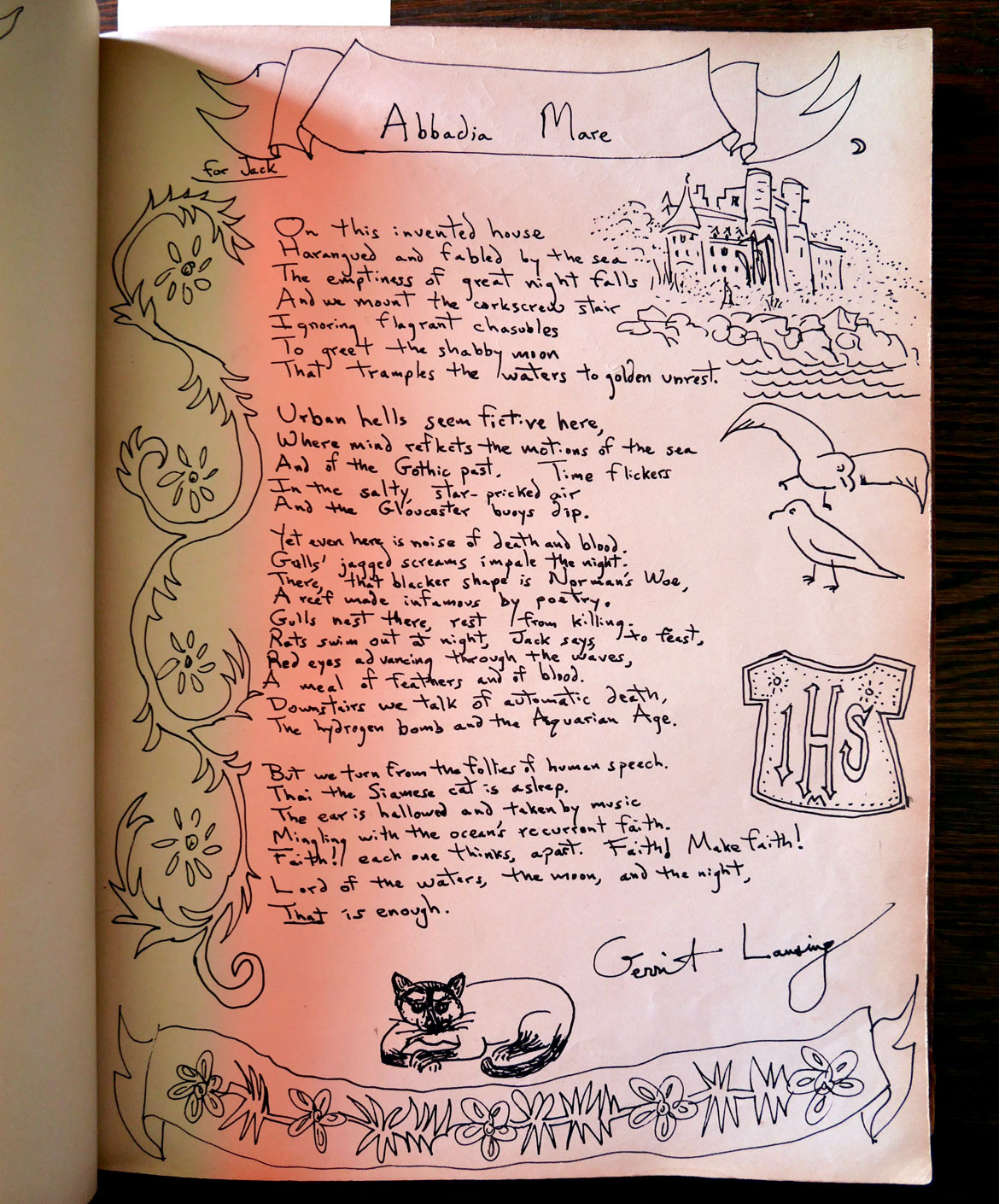
“My sense is that during this period there were still people coming up from New York,” Rich says. “I get the sense that it is a haven for gay men. It’s a place where they can party and cavort. They were into things like literary games—you have to come up with a story on the spot or a speech on the spot.”
Hammond also explored the occult. His friends included parapsychologists and, in the 1950s, he built a Faraday cage in the Castle’s Great Hall that he hoped would block ESP, extrasensory perception, McMurphy says. Lansing, too, was a longtime devotee of the occult.
Lansing published two issues of his literary magazine “Set” in the early 1960s—Hammond was among those thanked on the last pages because their “generosity & help made this issue possible.” Featured poets included Elmslie, Robert Duncan, Charles Olson, Edward Dorn, John Wieners, Stephen Jonas, LeRoi Jones. Martin designed the covers—the front of the second issue depicted a male body and a female body, nude, conjoined at the head, with calm closed eyes, and lines shining out from its long wavy hair. Rich says, “Most but not all the contributors were queer and it was very frank, it was very open.”

In his 1984 “The Autobiography of LeRoi Jones,” the Black power activist and writer, who later changed his name to Amiri Baraka, recalls Gloucester poet and former Black Mountain College rector Charles Olson taking him to the Castle for an evening with Hammond and “a few friends, all, I think, gay. I think the only non-gay persons in the crib were Olson and I. … Olson, center stage as usual, was telling these stories.”
Baraka went on, “When we go to bed that night, I got a room that’s right off this patio in the middle of the castle. After midnight sometime, I hear this noise like splashing and men’s voices high and tittering. I go to the door and prop it open and this guy’s friends are diving from a second-story balcony down into his pool in the middle of the patio. They’re butt naked. It was like being woven into a tapestry of exotic otherness, but the next day when we got back to Olson’s place he is roaring with laughter at the whole business.”
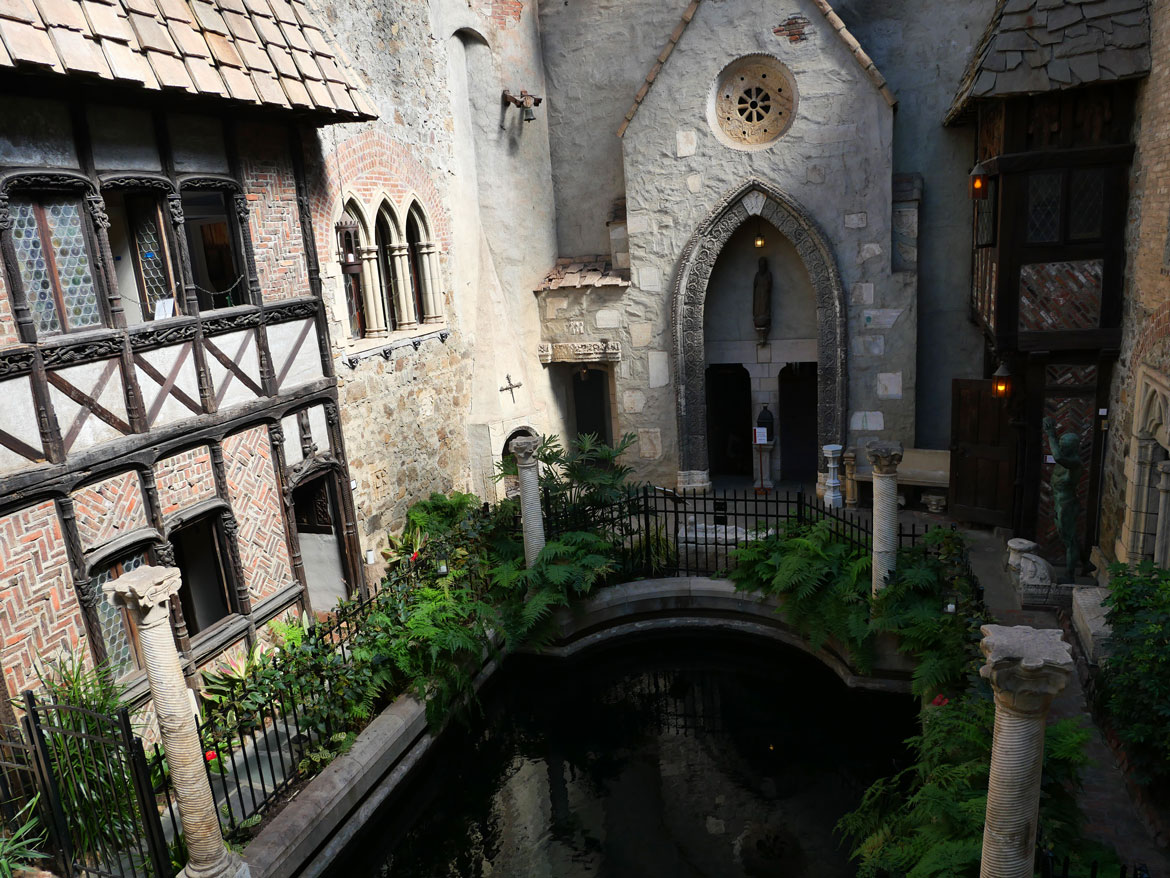
‘Material Just Coming Out Now’
Hammond died in 1965. Martin moved into an apartment above Nick’s Pool Room on Main Street and drove a taxi in Gloucester and taught art at St. John’s Prep in Danvers. He died in 1984.
Oakley inherited Hammond’s cats. The Castle, which Hammond had operated as a museum since the 1930s, was donated to the Catholic Church, which ran it for about seven years, before management of the museum was taken over by a private group, McMurphy says.
Lansing, who’d moved out of the Castle to live with Burton in Gloucester’s Annisquam neighborhood, soon left Gloucester, joining Burton in skippering private yachts to their winter berths in Florida and the Caribbean. Lansing and Burton would be partners with for 35 years.
In 1966, Lansing published a collection of his poems that he called “The Heavenly Tree Grows Downward,” which he would revise and expand in additional editions throughout his life. “Alchemical … With themes at once personal and social, erotic and esoteric,” reads the jacket to the 2009 edition, “Heavenly Tree, Northern Earth.” “Gerrit’s poems can be lyrical and pastoral and dreamy and full of the magic elixir of Seduction, where the Mother of Memory is the Imagination,” poet and publisher Ryan Gallagher wrote in the 2013 magazine of Boston-area writing “Let the Bucket Down.” Though Lansing’s name appeared occasionally in Boston Globe listings of readings, he largely operated under the radar—which seemed to suit him. “An underground but influential and very respected poet from Gloucester,” the poet Michael Franco described him in a 1993 Globe preview of a reading Franco was organizing.
Lansing and Burton moved back to Gloucester in the early 1980s and Lansing opened his occult bookstore Abraxas in a small room above the Rigger bar on Main Street. Burton died in 1997. When Lansing died in 2018, numerous poets spoke at his memorial in the Great Hall at Hammond Castle. I wandered into the courtyard, where the pool is, and remembered Lansing’s hints of wild parties.
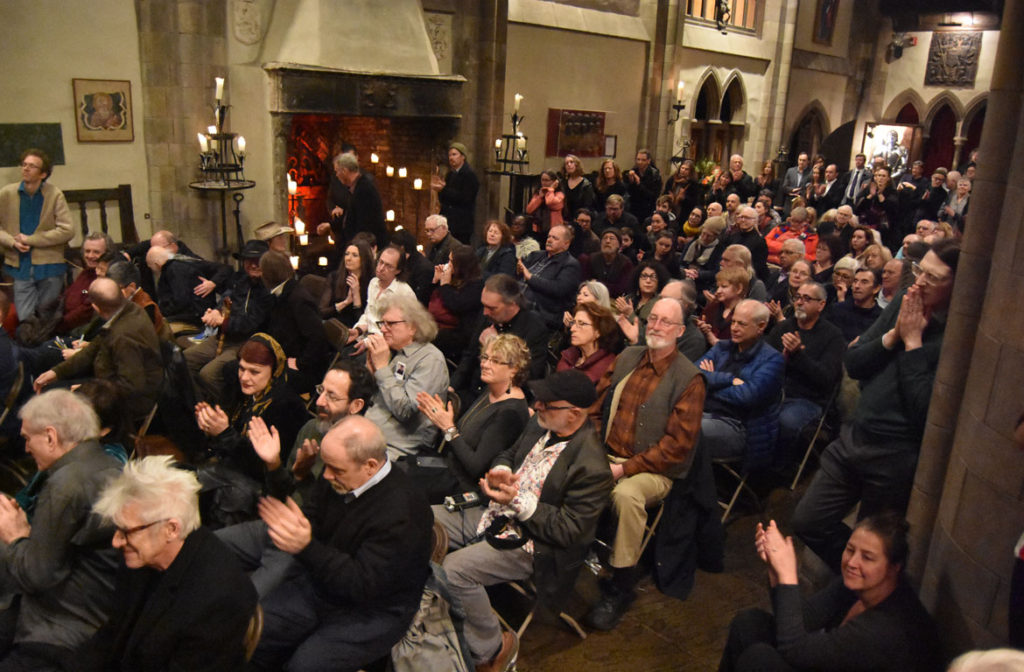
Under Hammond Castle’s current executive director, Linda Harvey, money has been put into hiring staff to organize and digitize papers left behind at the Castle when Hammond died, Rich says.
“So there’s all kinds of material just now coming out,” Rich says. “When I worked at the Castle in the late 1990s, the staff did not have access to this archive. It was not available for scholars to study. It wasn’t something the staff even knew about.” Many of the papers were in the upstairs bedrooms on the ocean side of the building, where Hammond; his wife, the artist, astrologer (she published a column in the 1920s under the name Madame Renee Lonquille) and theosophist Irene Fenton; and then Martin had slept. These rooms are now offices and archival storage. “No one was allowed up there. That’s where all this stuff was, all these papers were. All this stuff was sitting there.”
Including Hammond’s guest book, long thought lost, with Kelly’s drawing tucked inside.
“They’d found this sketch. They kind of let me go through it and I hit that and I’m just sure I swore out of excitement,” Rich says. Martin had turned 33 in late March 1960, so perhaps Kelly had come to Hammond’s Castle for that. “It was so different than everything else I’ve seen by Ellsworth Kelly. There’s a humor in it. It’s cartoonish. A sense of fun. It’s warm and playful and cheeky. It seems like it was done by a friend for a friend.”
Rich says, “It’s illuminating this kind of forgotten scene. It’s a queer story. It was kind of a thriving queer scene.”
The extent of Lansing and Kelly’s friendship is unclear. “I don’t really know if Kelly stayed in touch with Gerrit,” Rich says.
After Lansing died, in the first floor library of his home across from Gloucester’s Stage Fort Park, was a plaster-cast life mask that Martin had made decades before—of Kelly.
If this is the kind of coverage of arts, cultures and activisms you appreciate, please support Wonderland by contributing to Wonderland on Patreon. And sign up for our free, occasional newsletter so that you don’t miss any of our reporting. (All content ©Greg Cook 2024 or the respective creators.)
